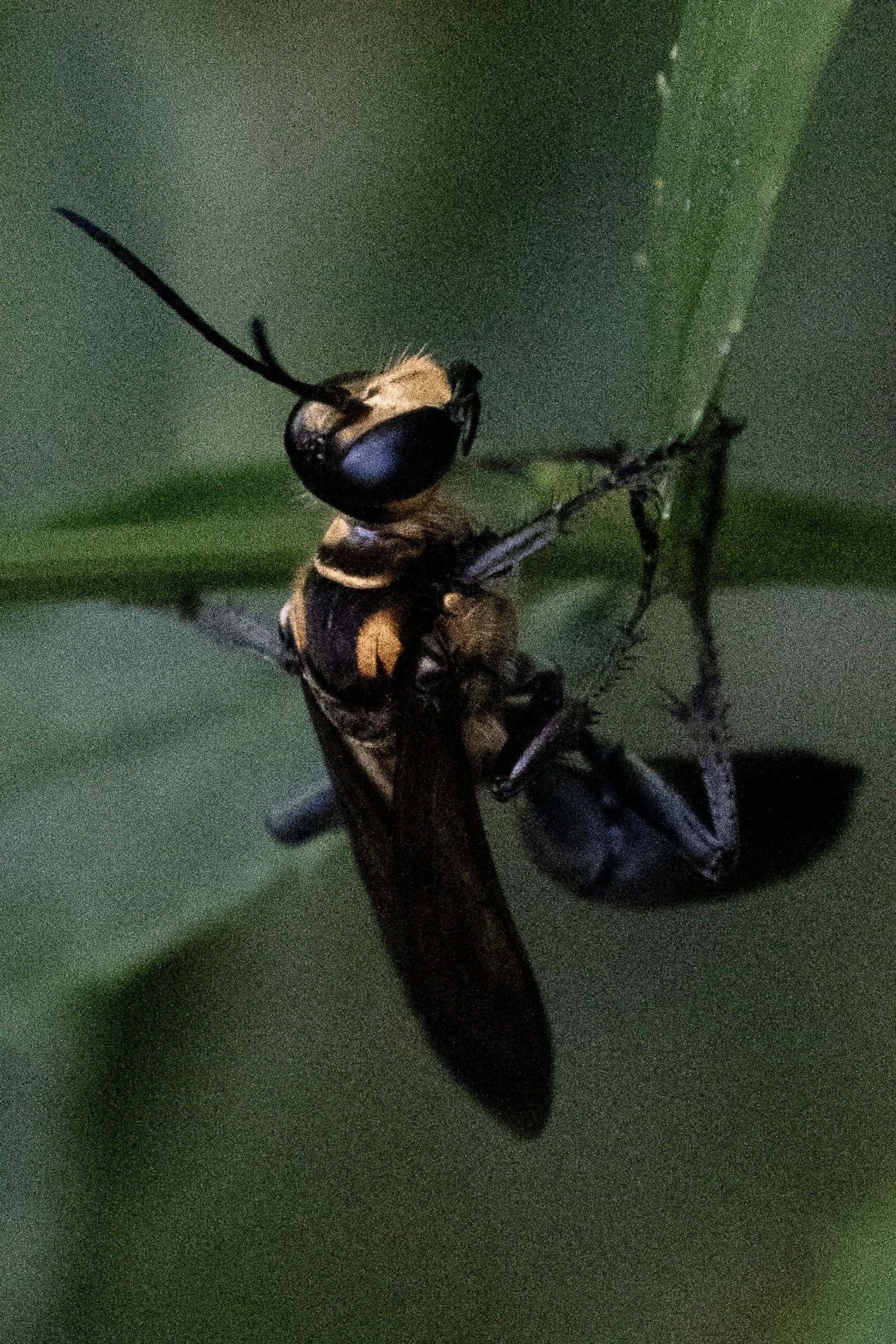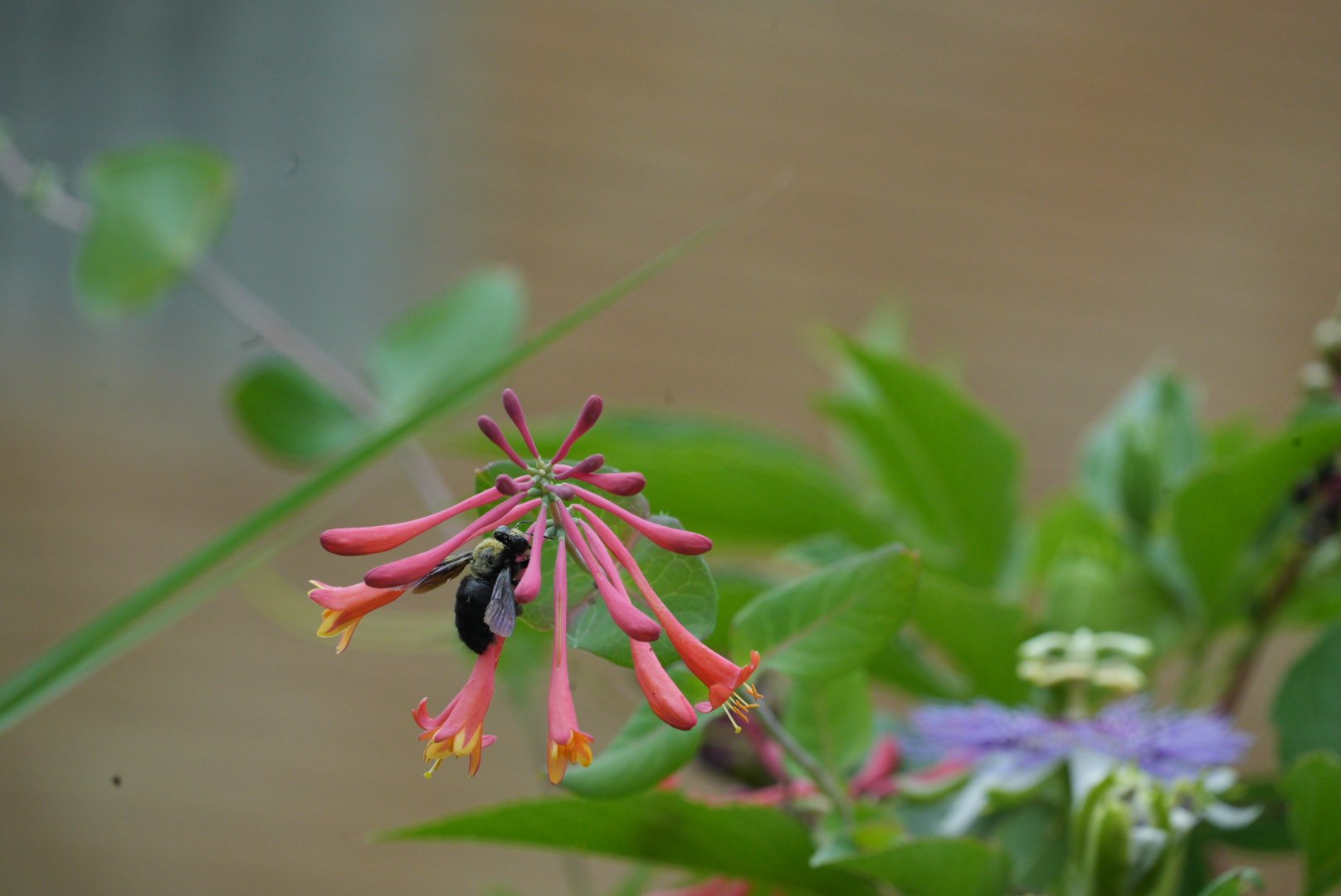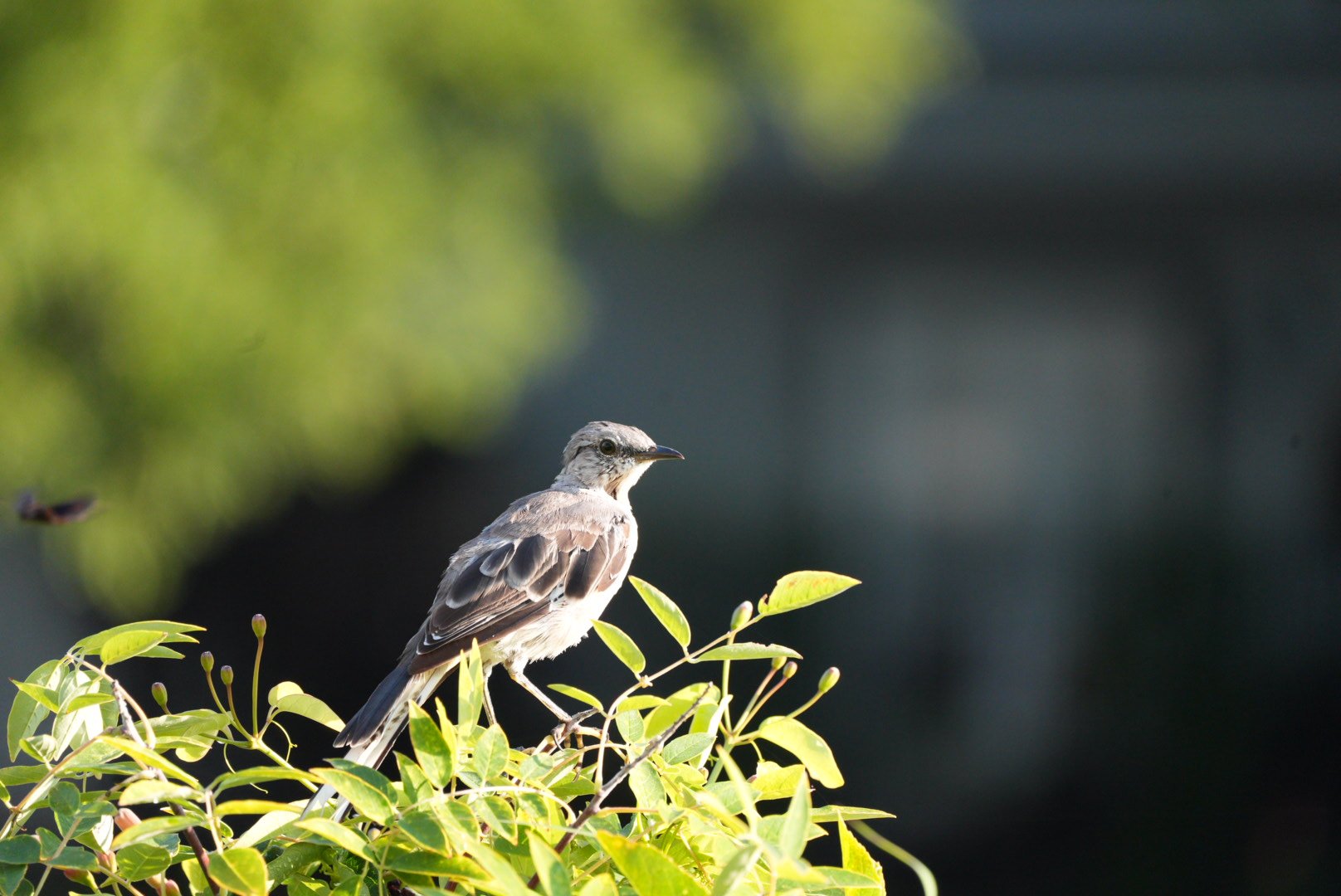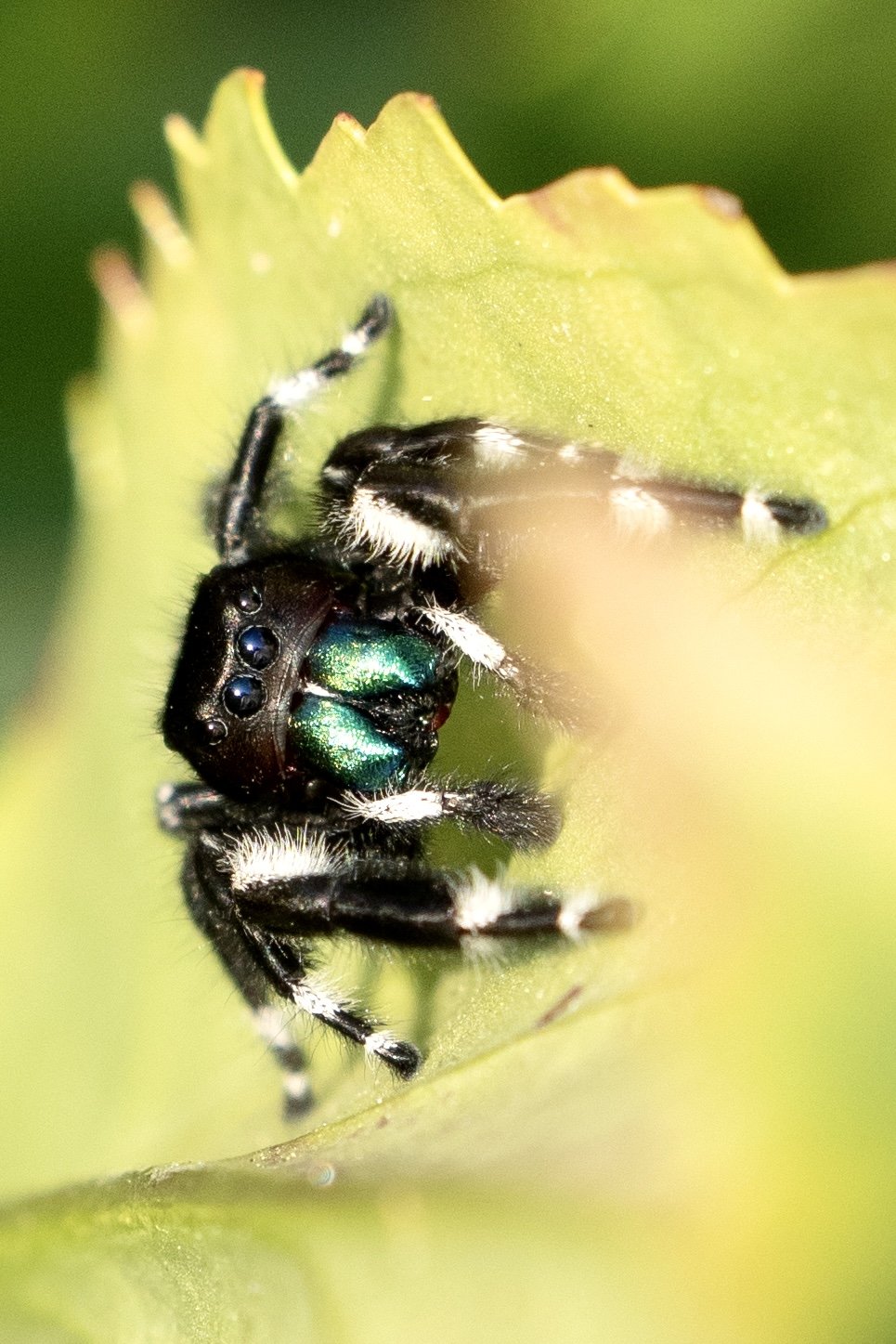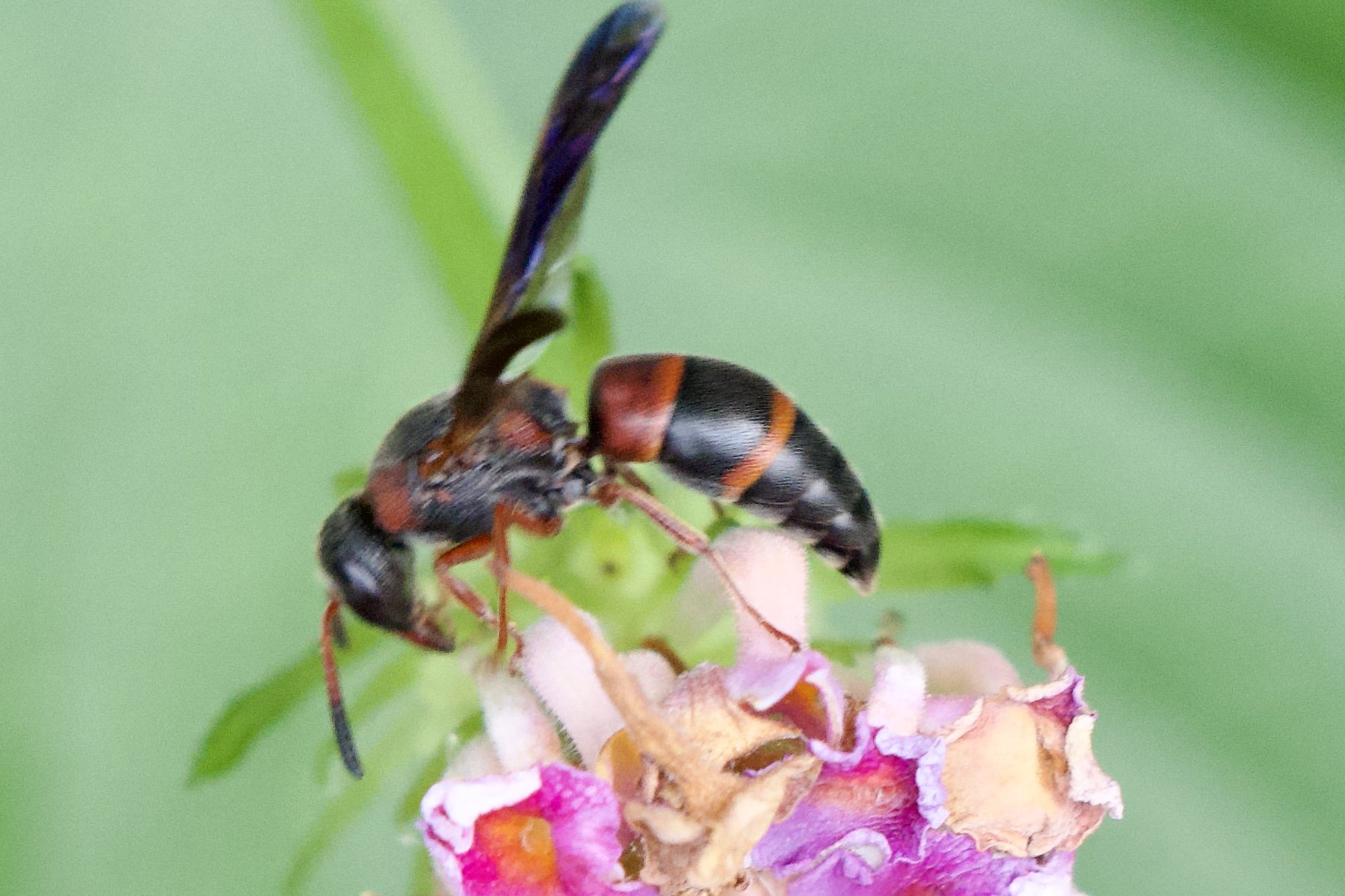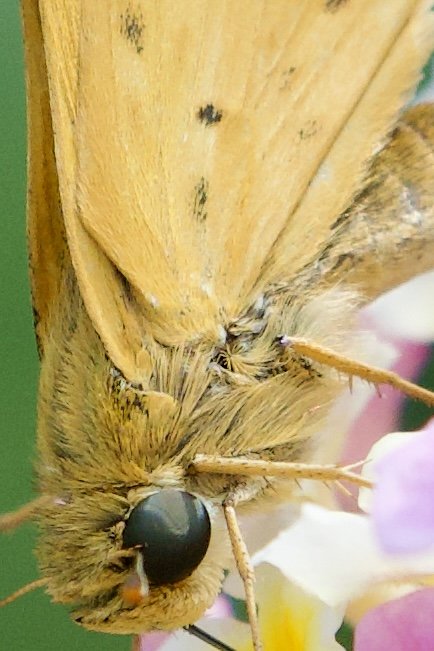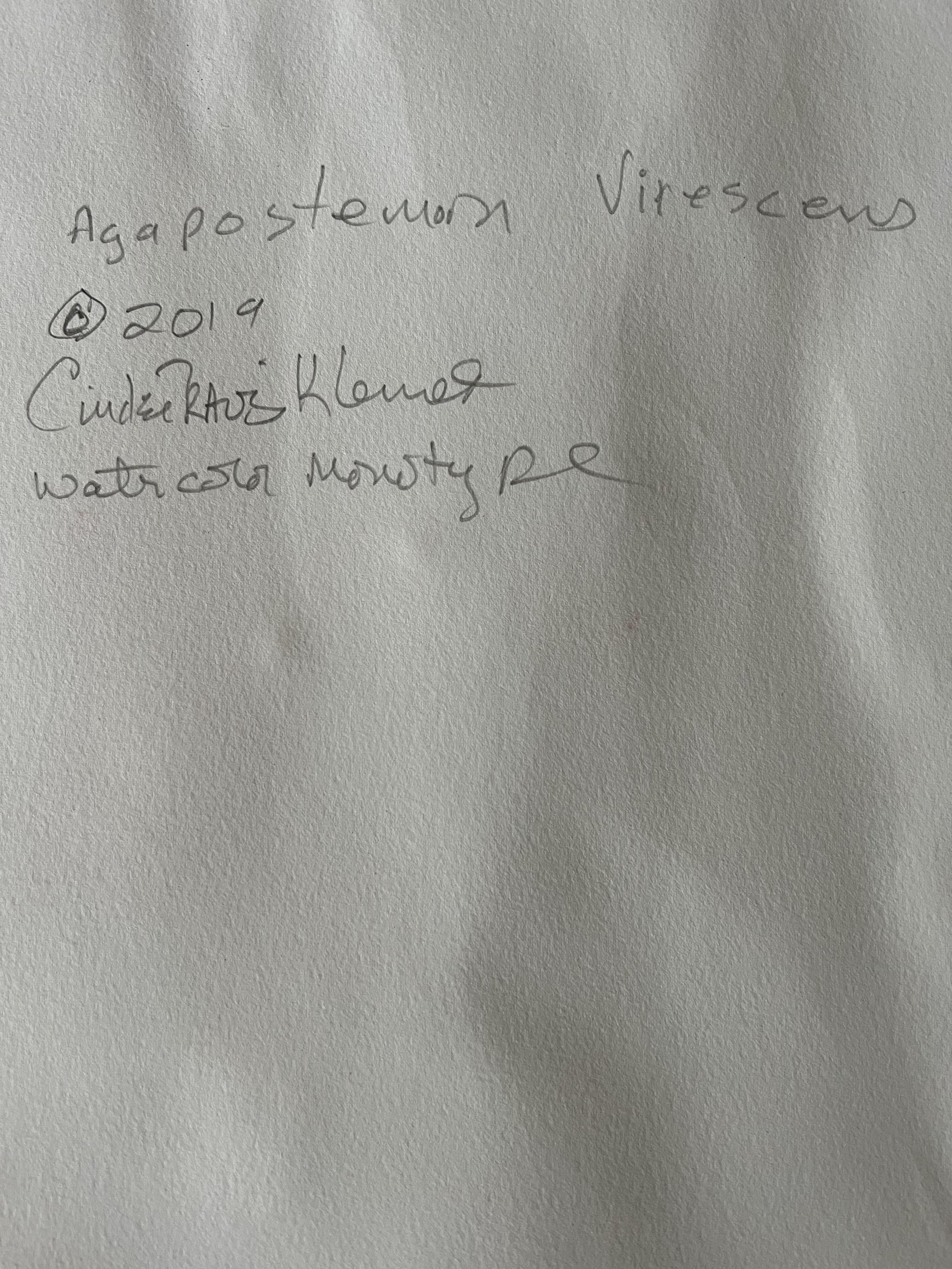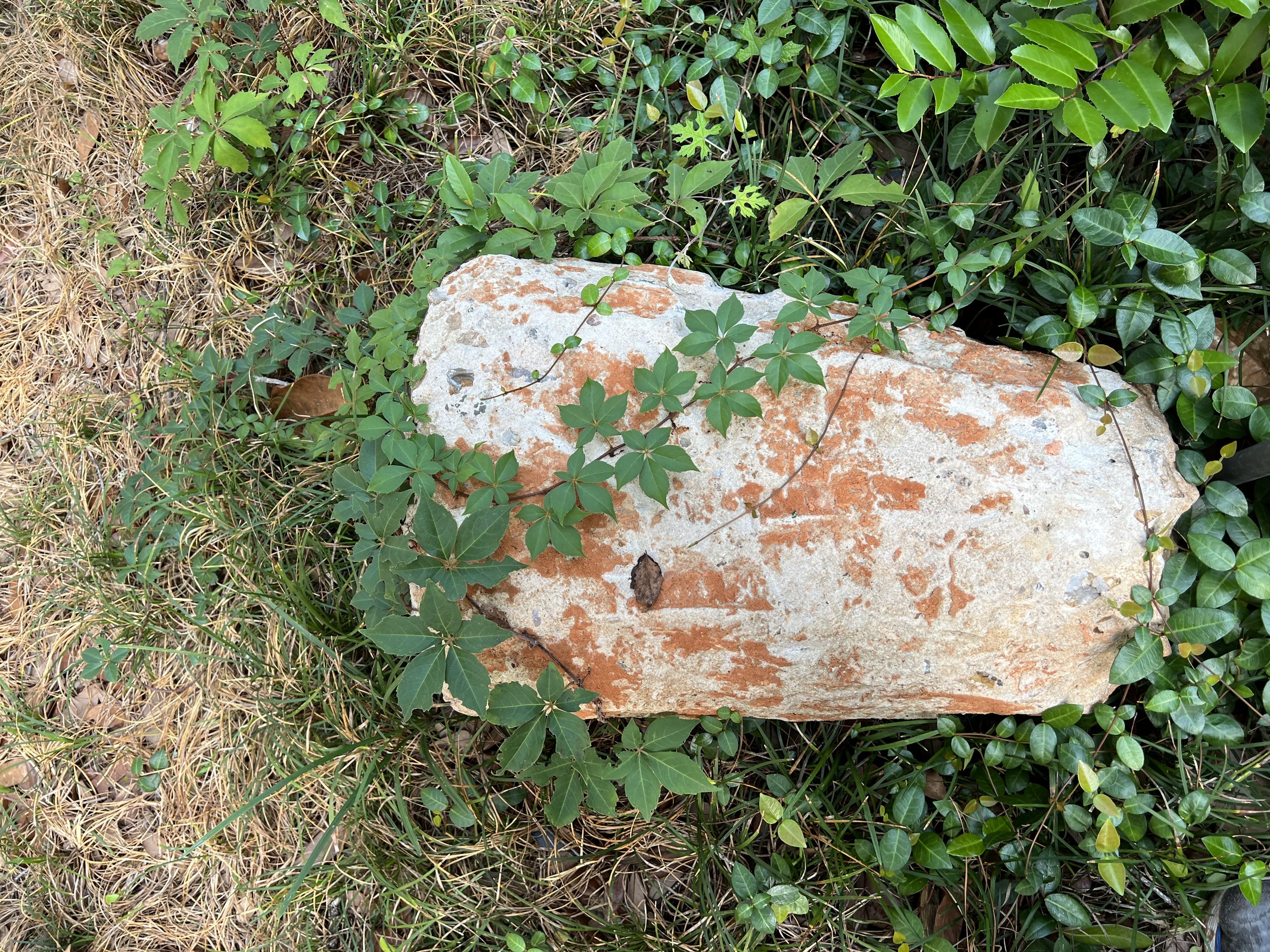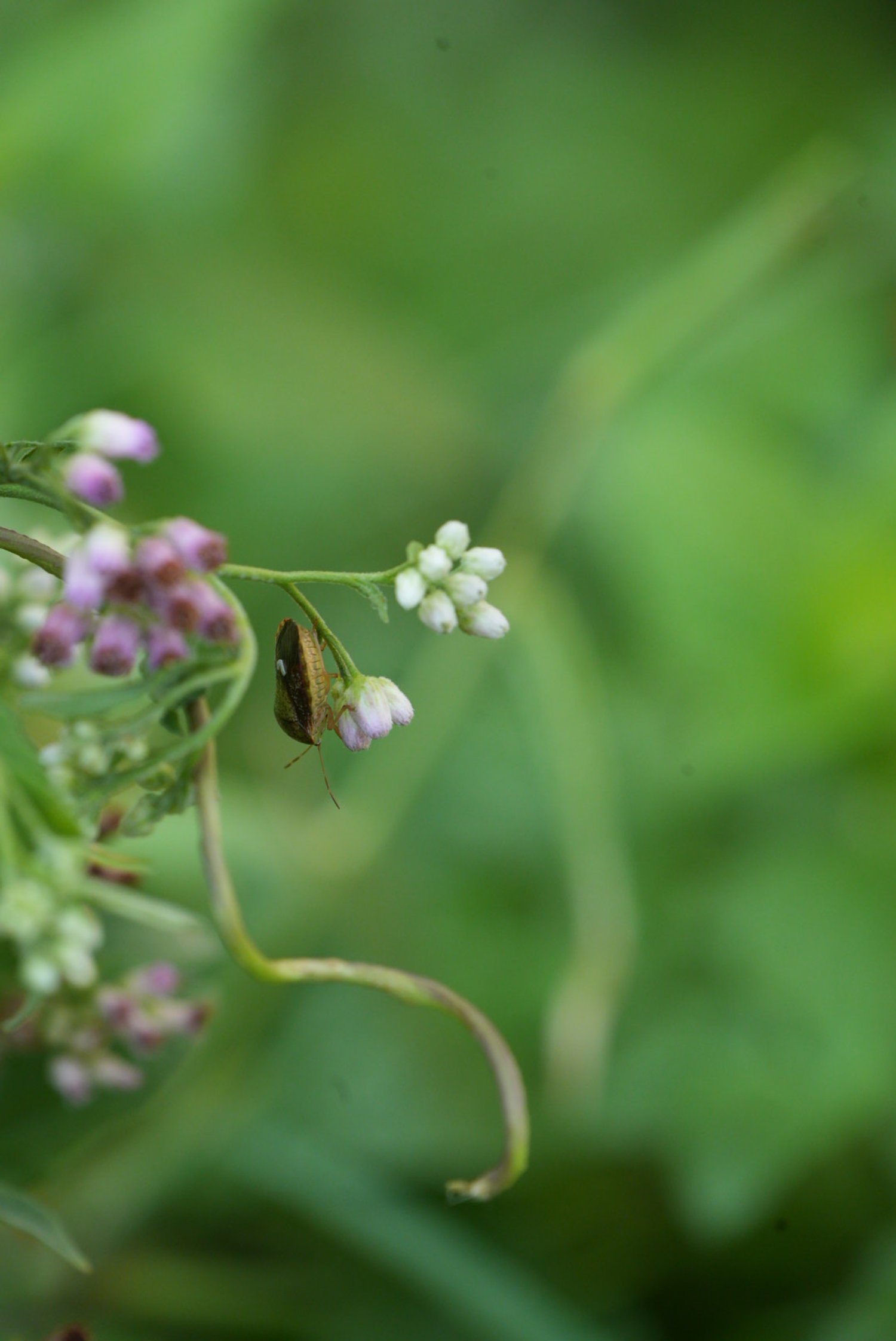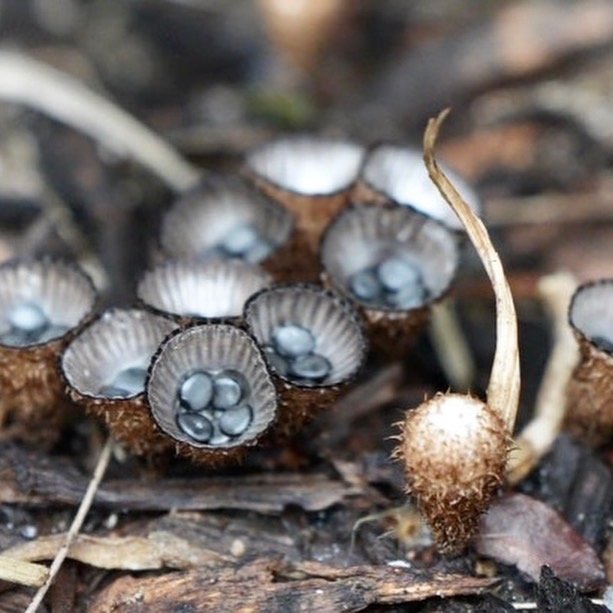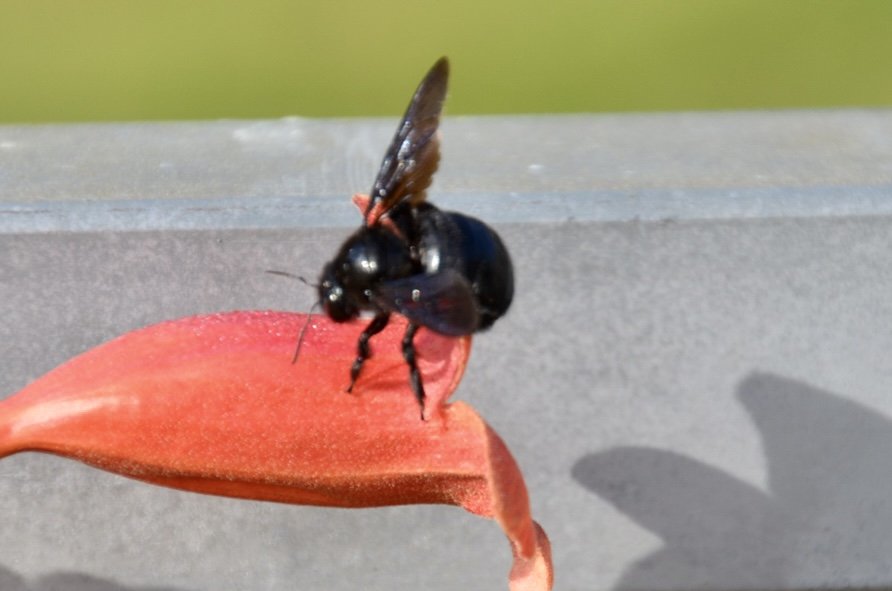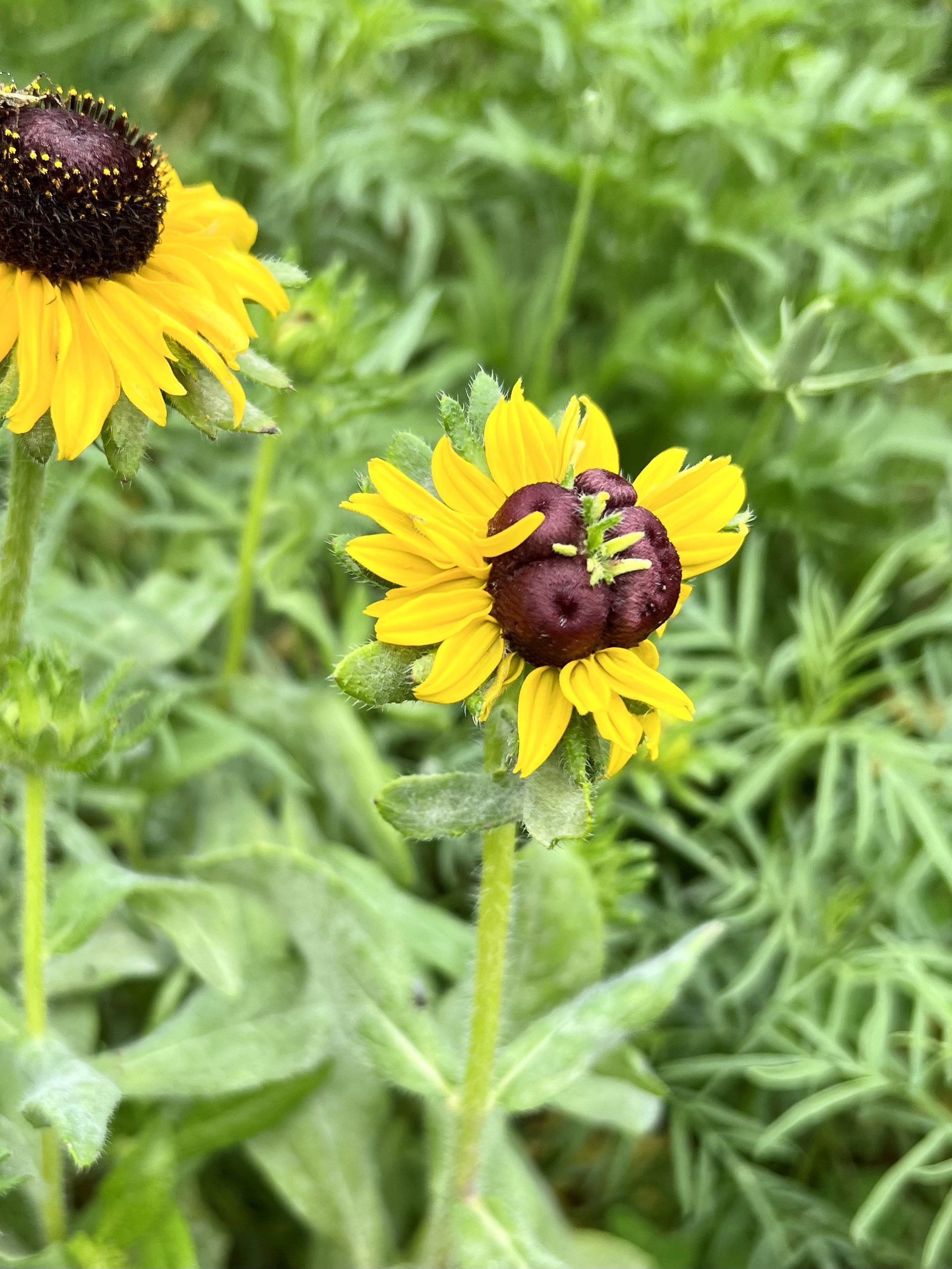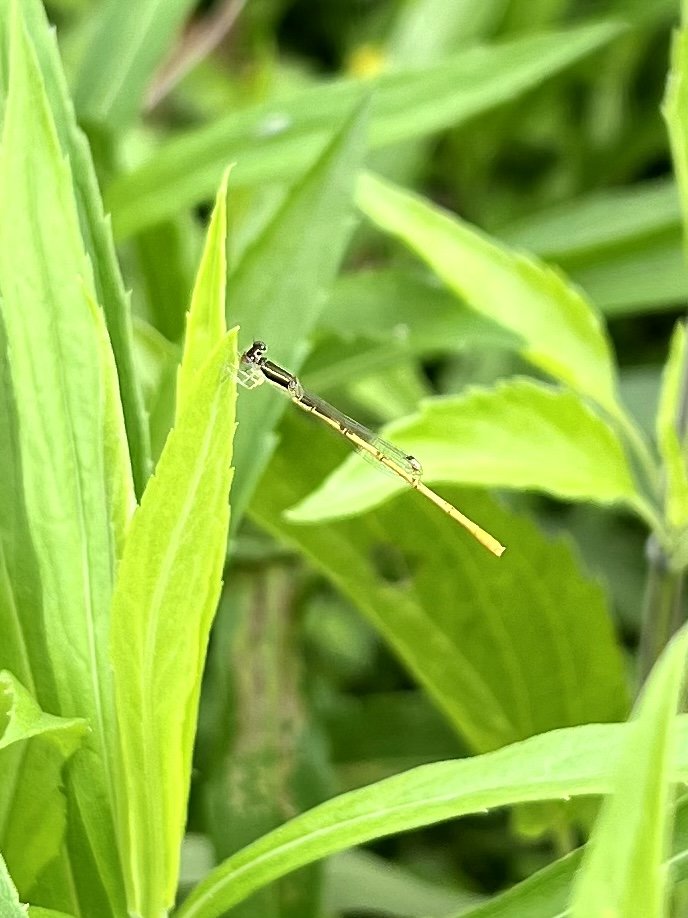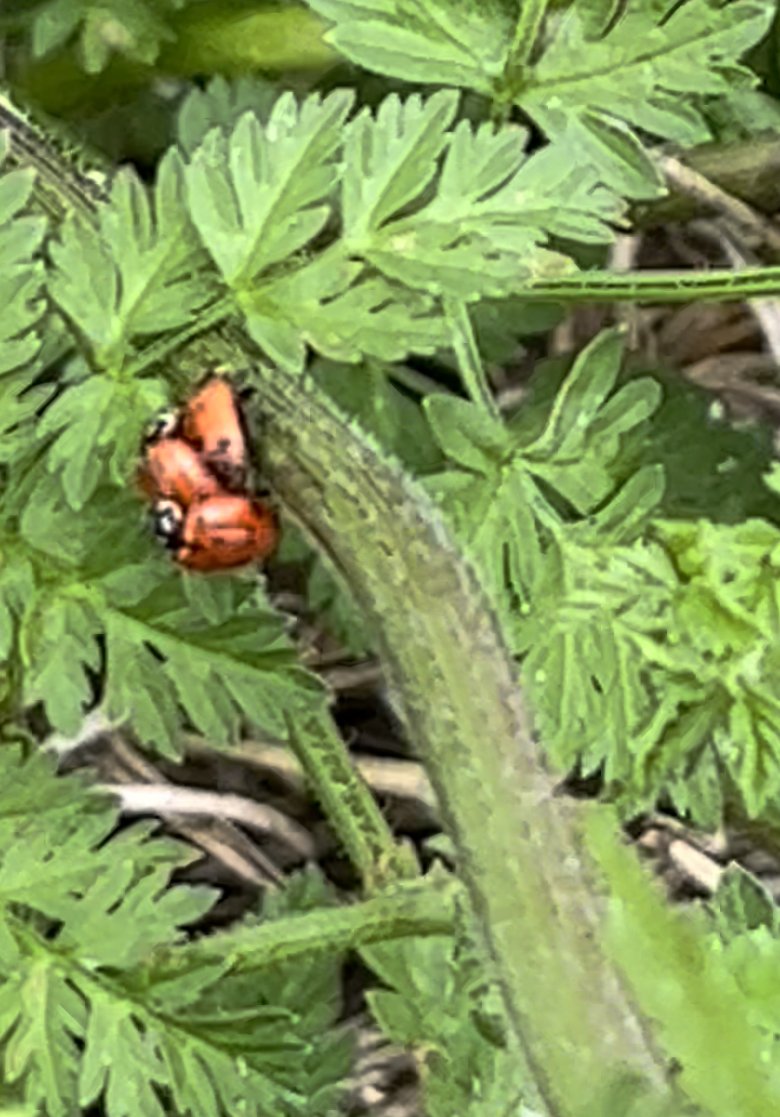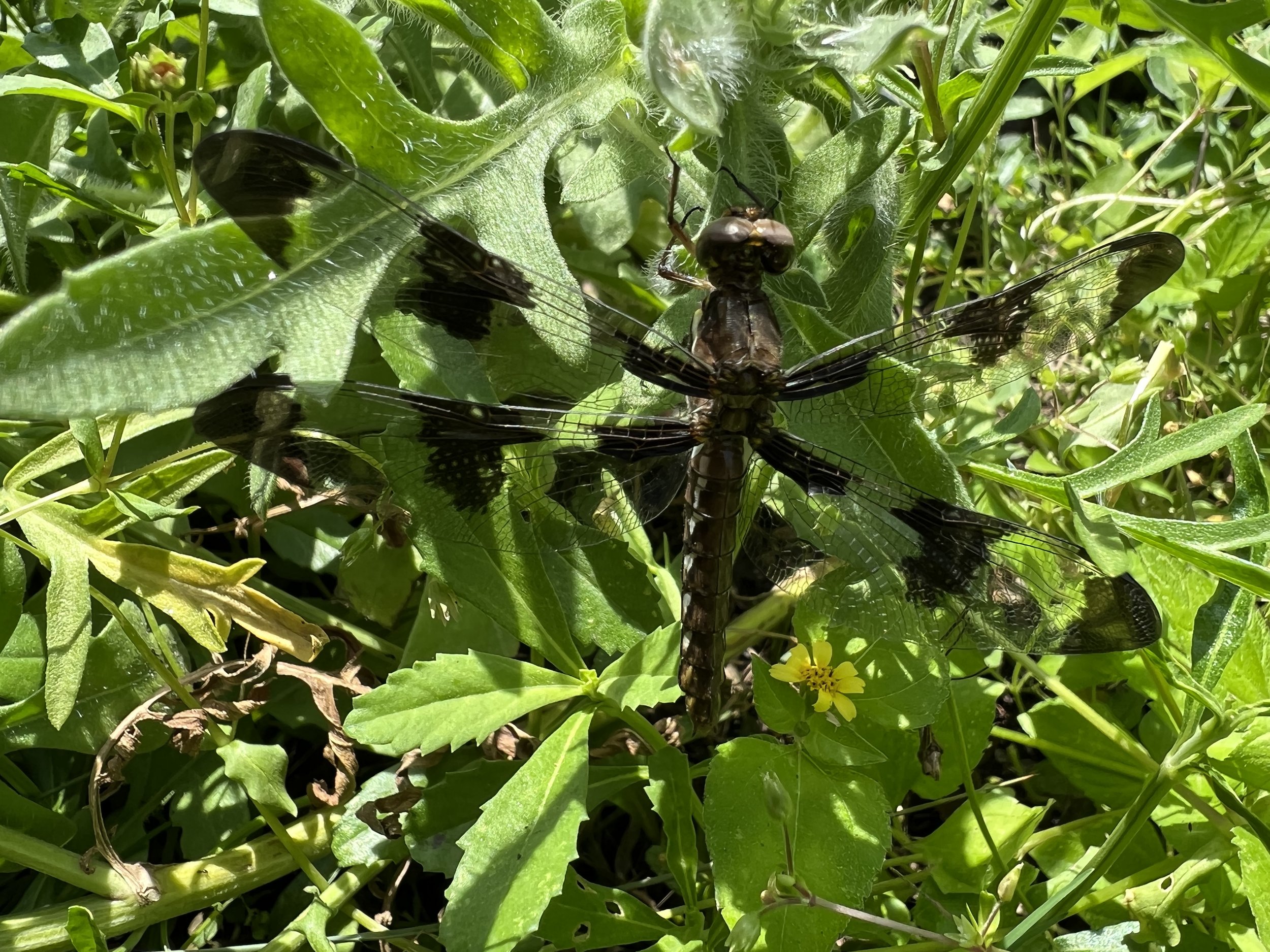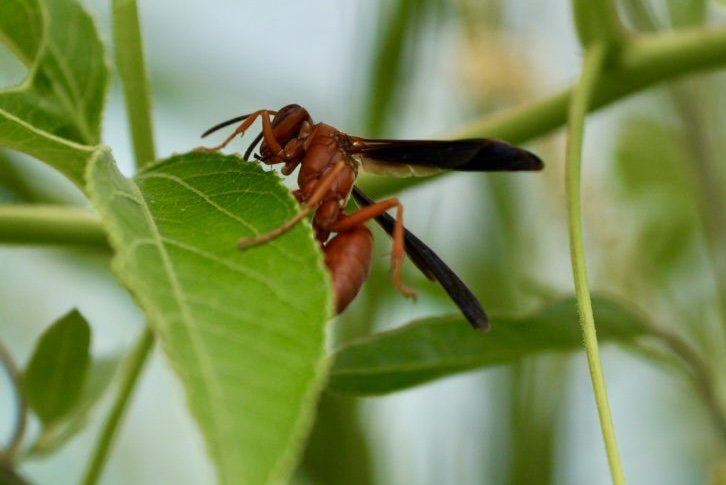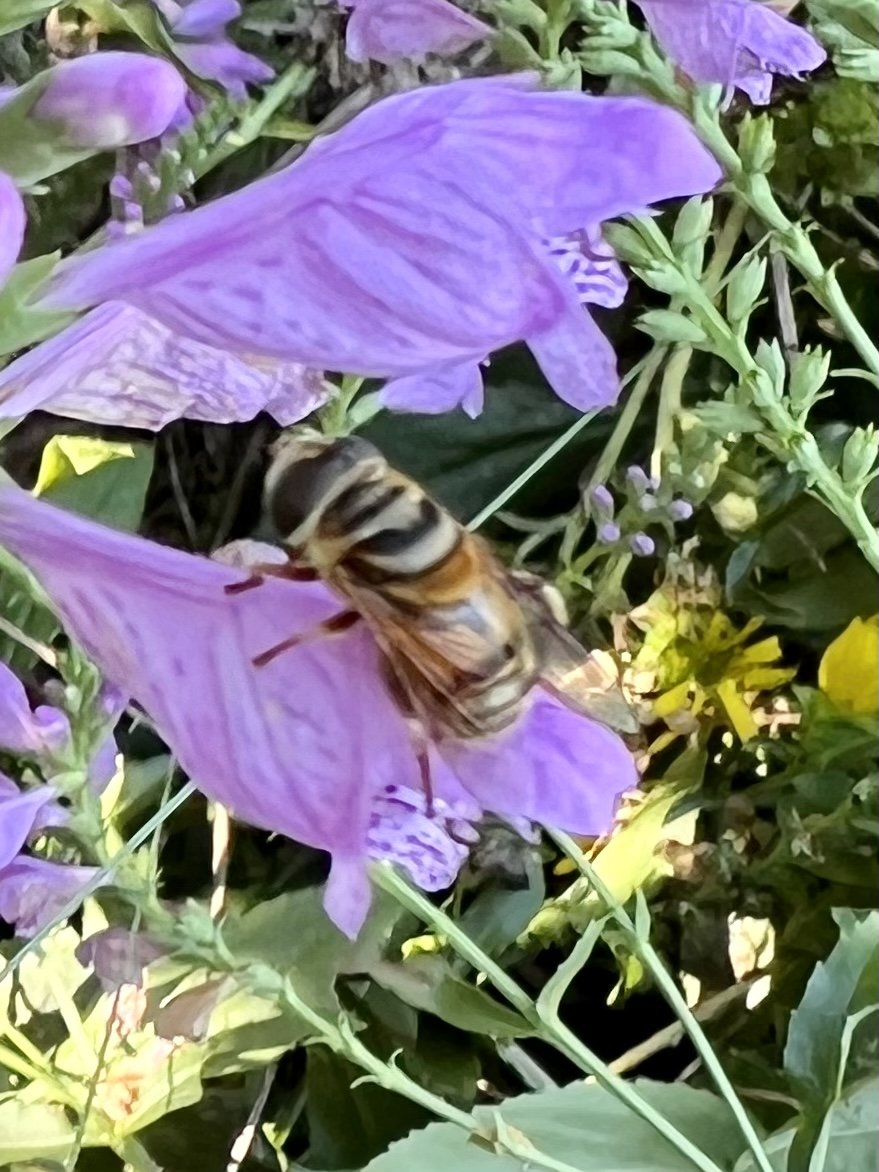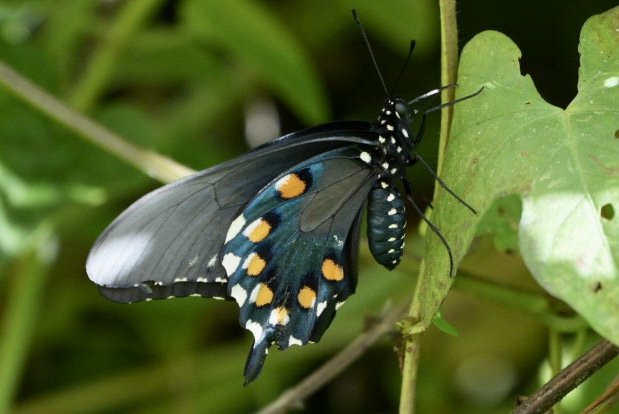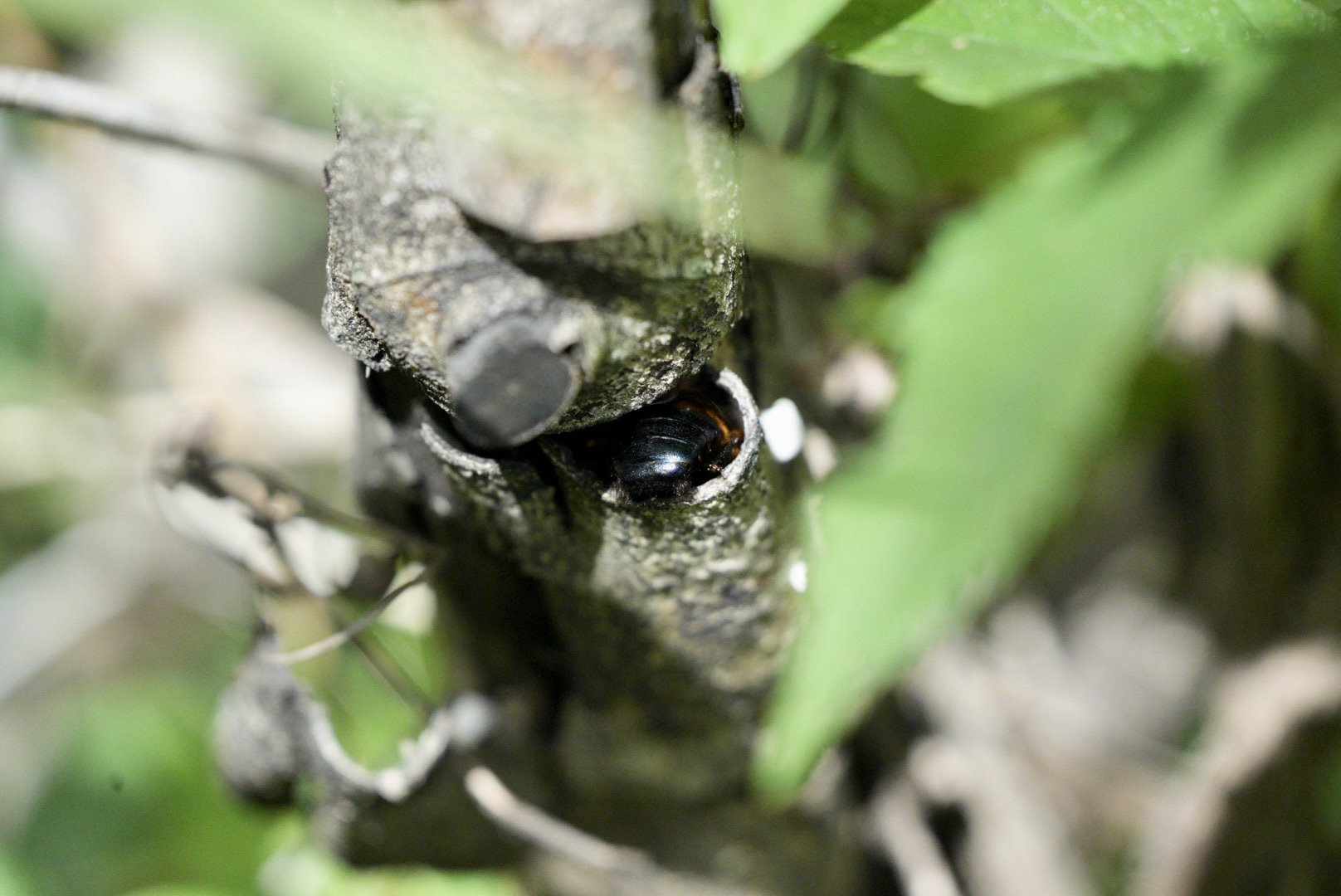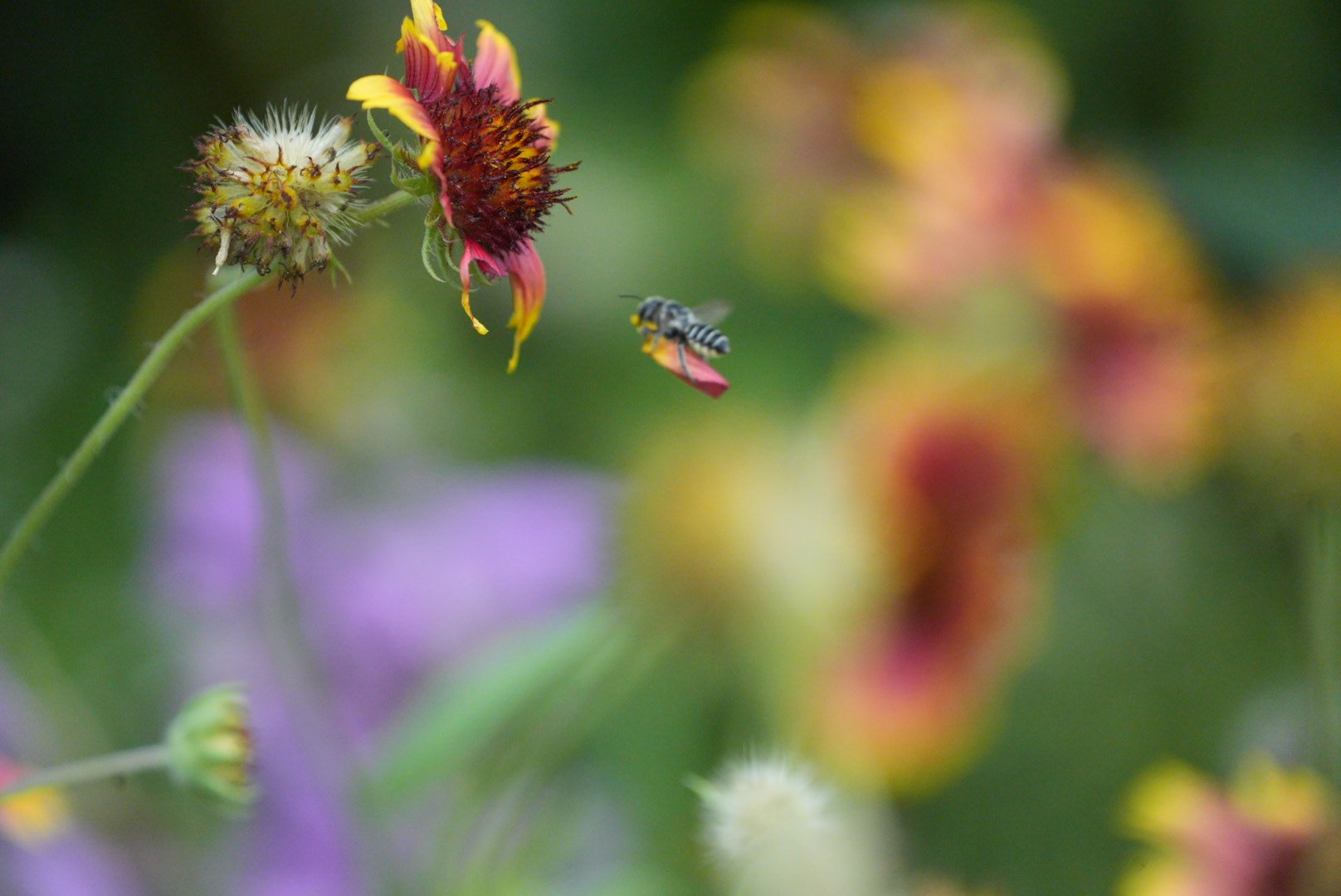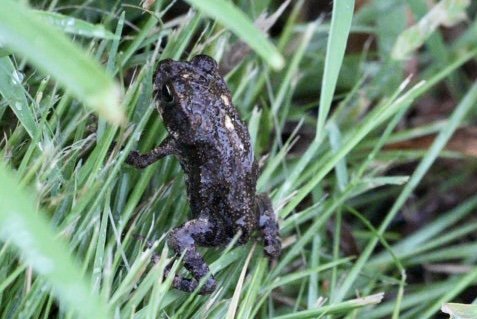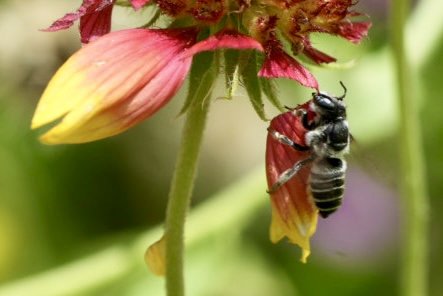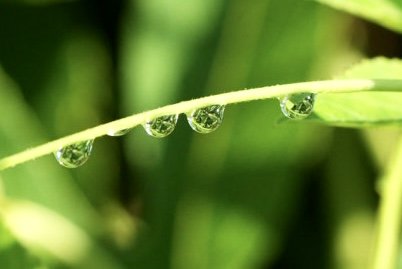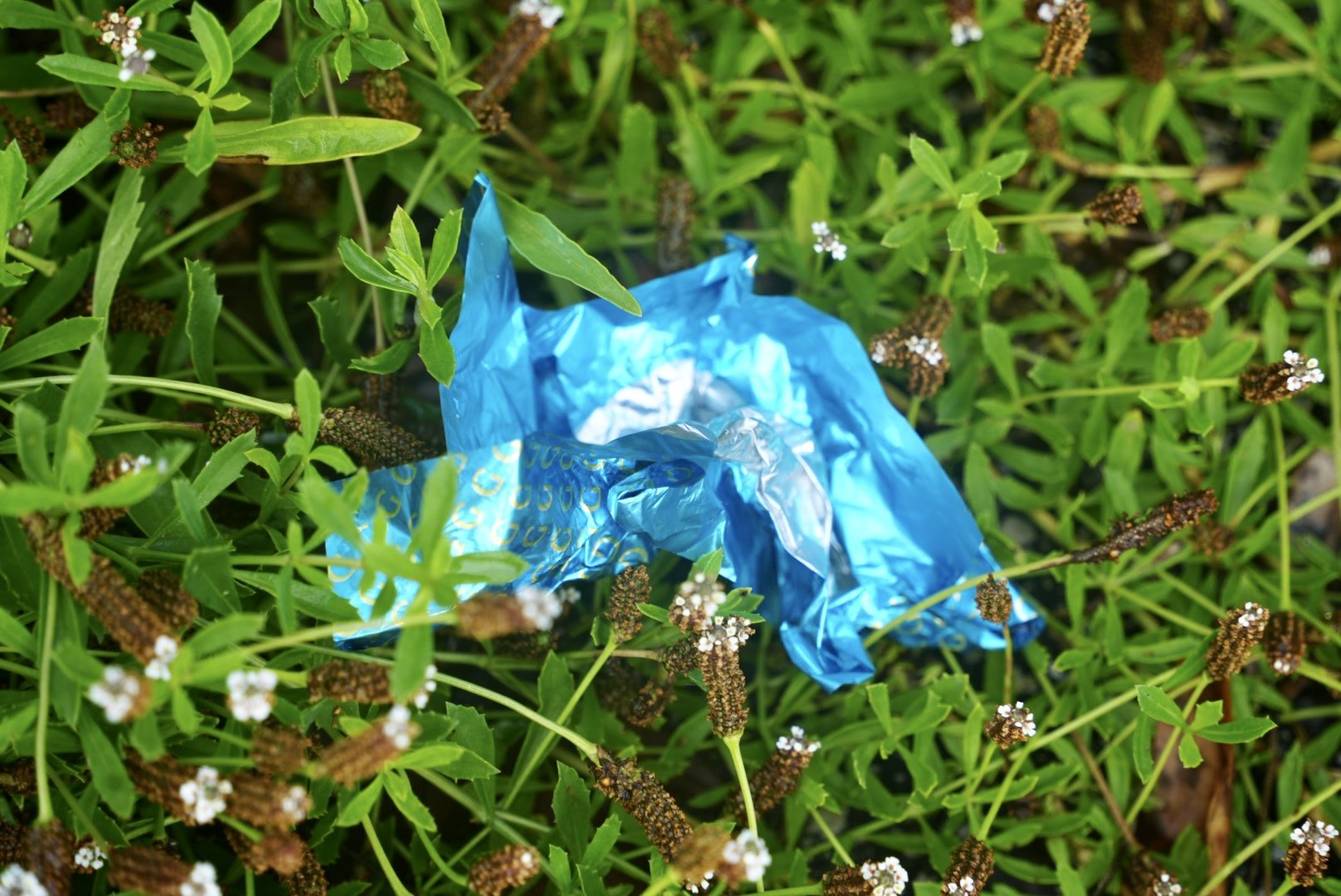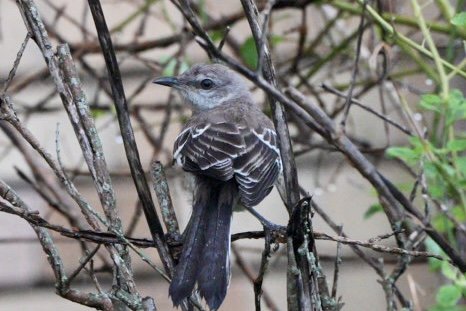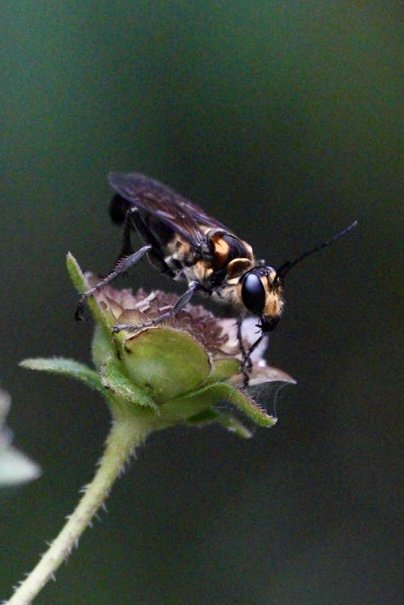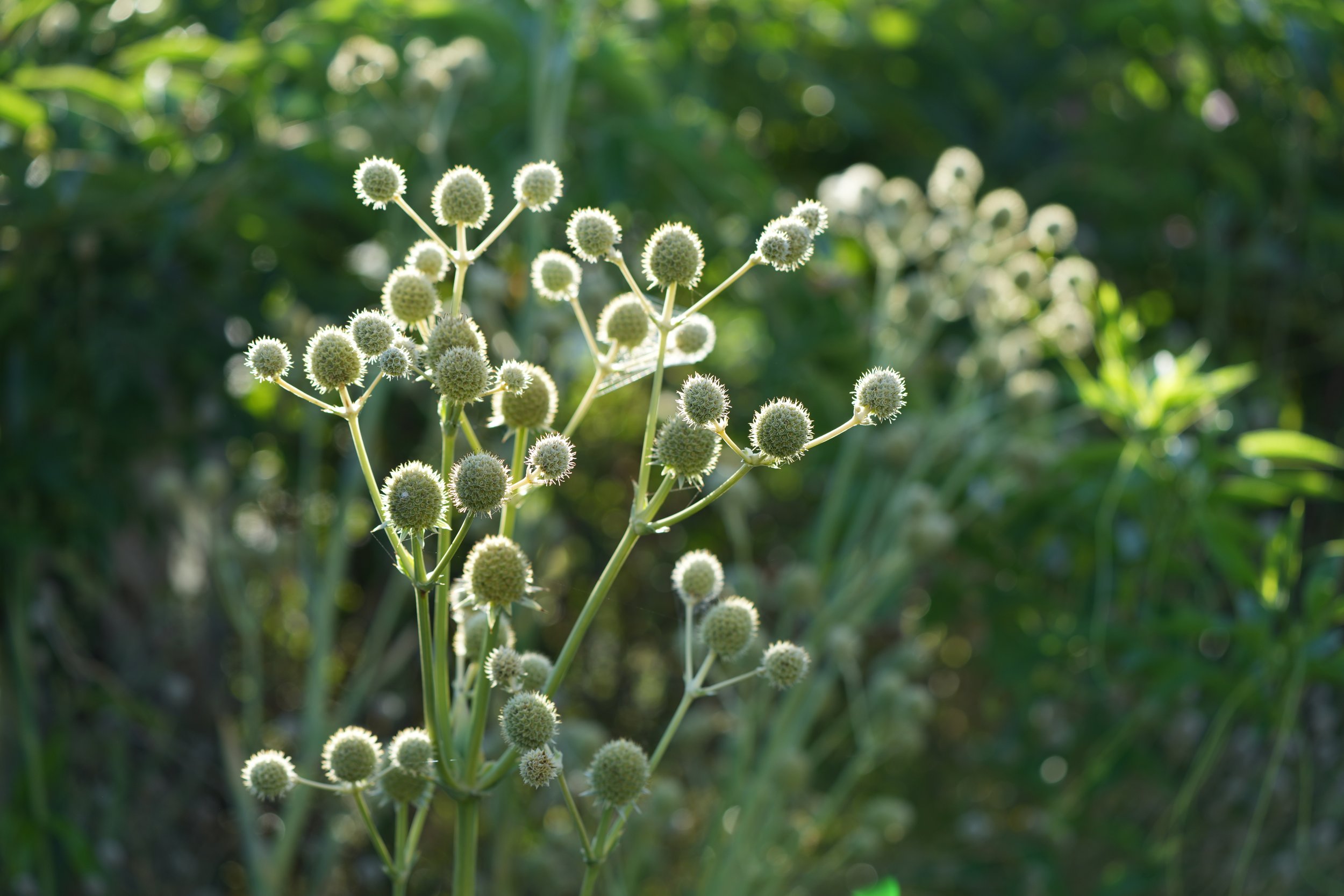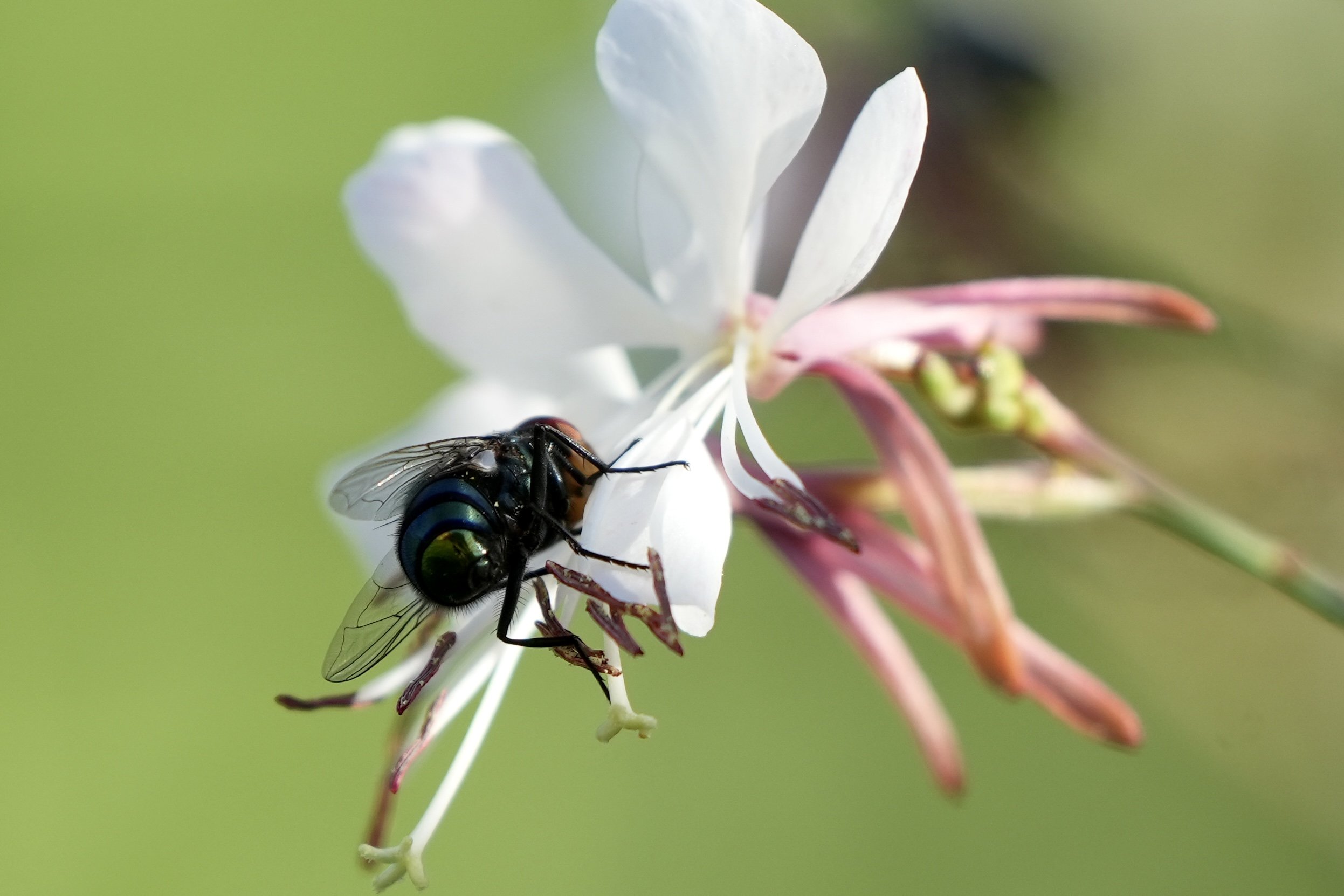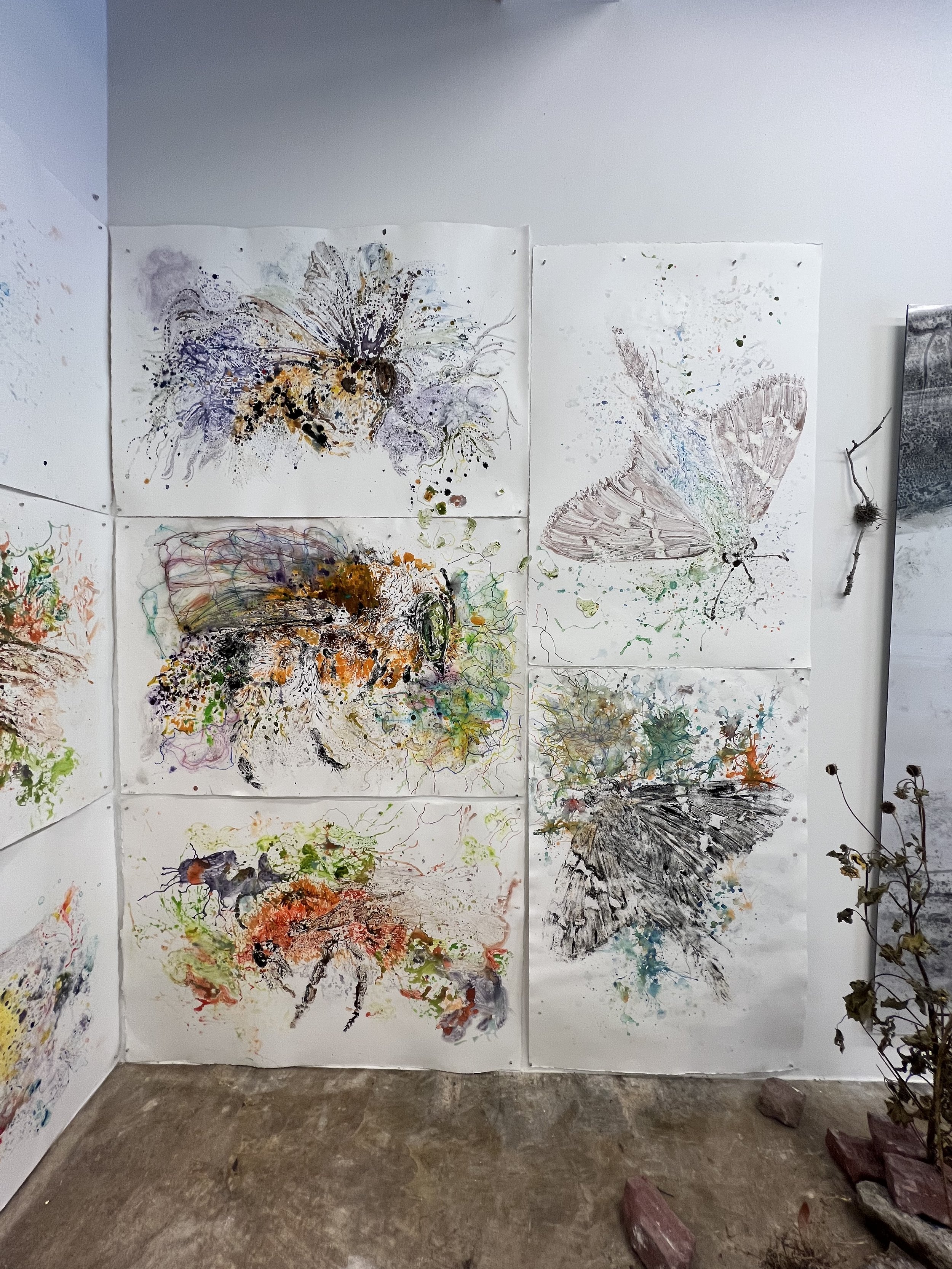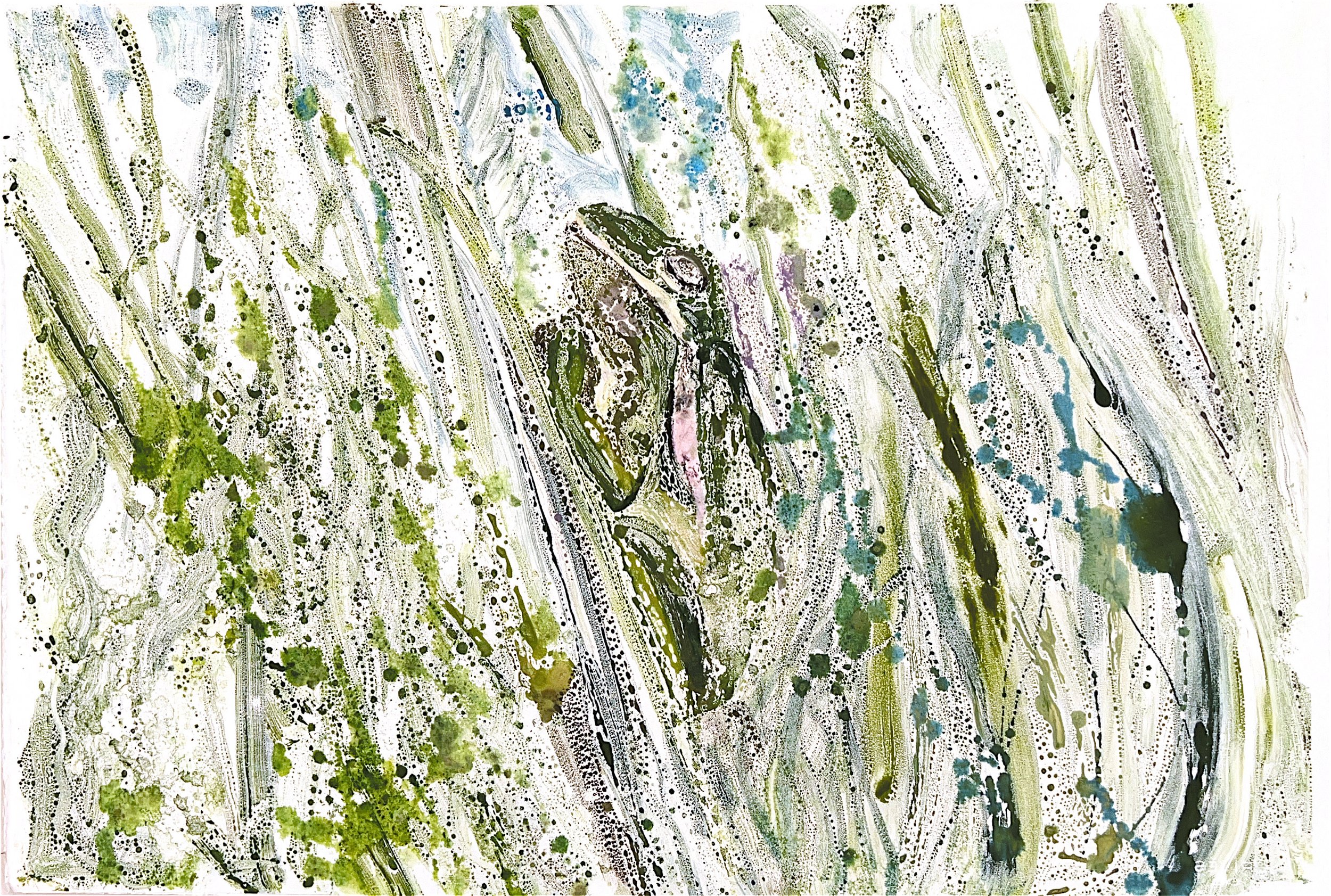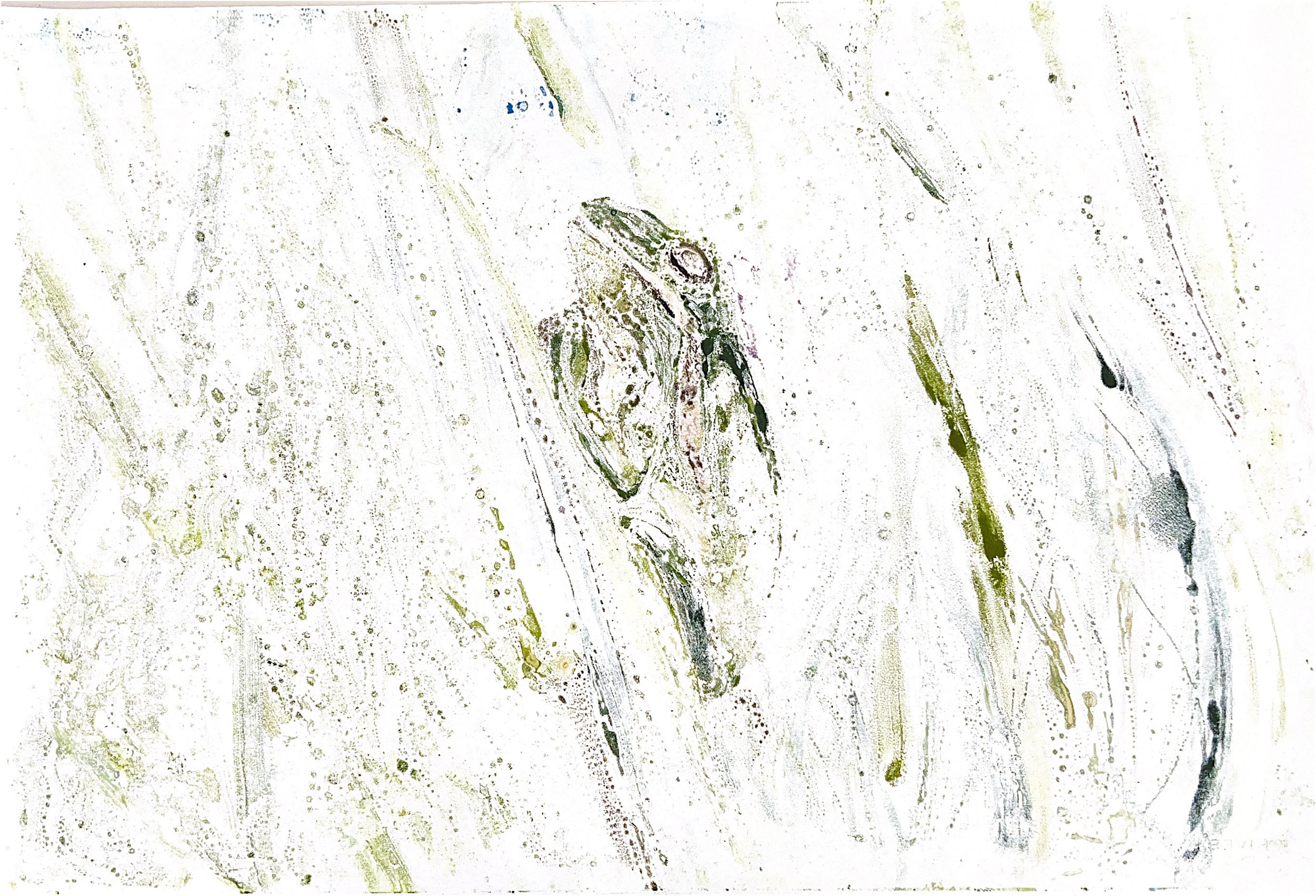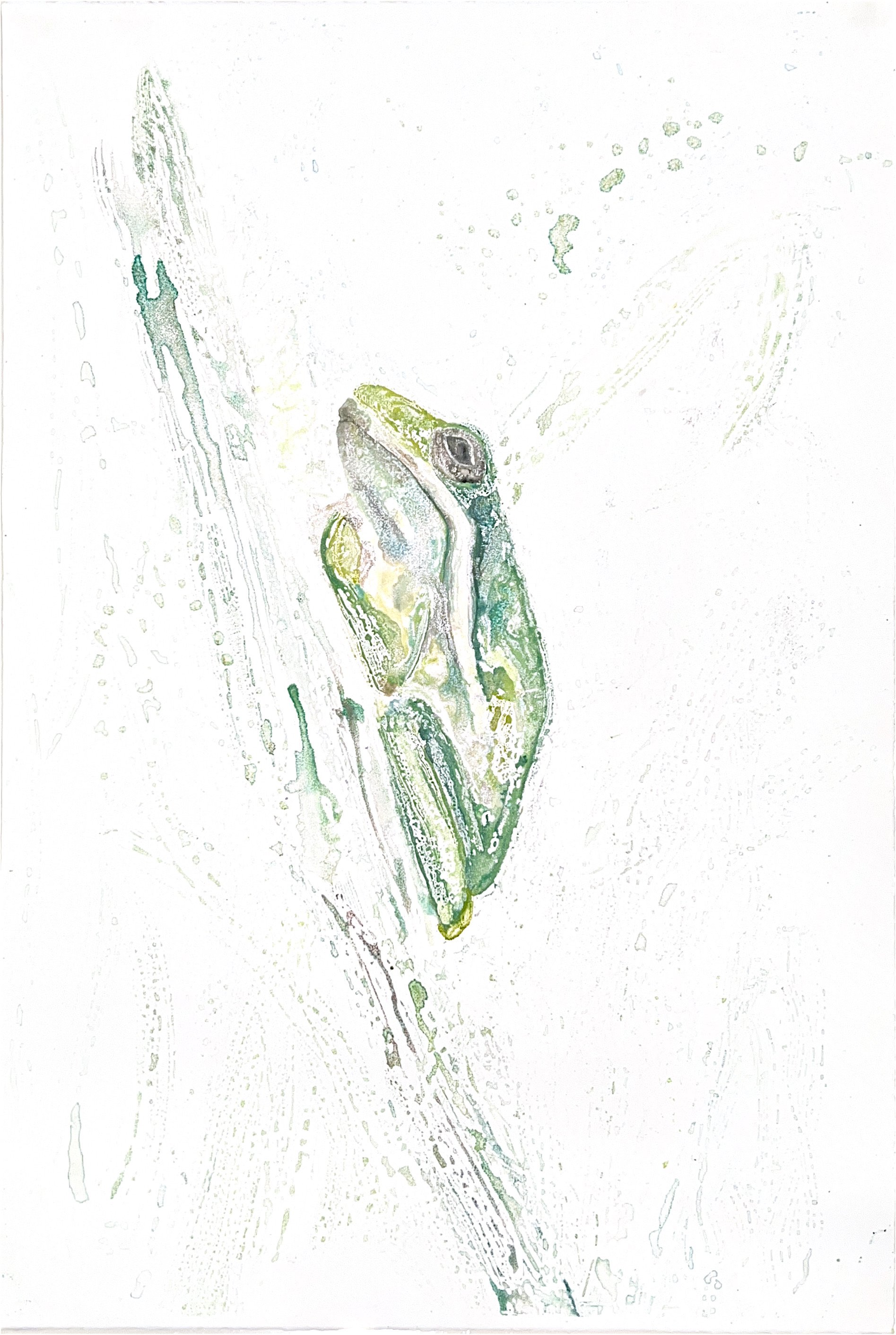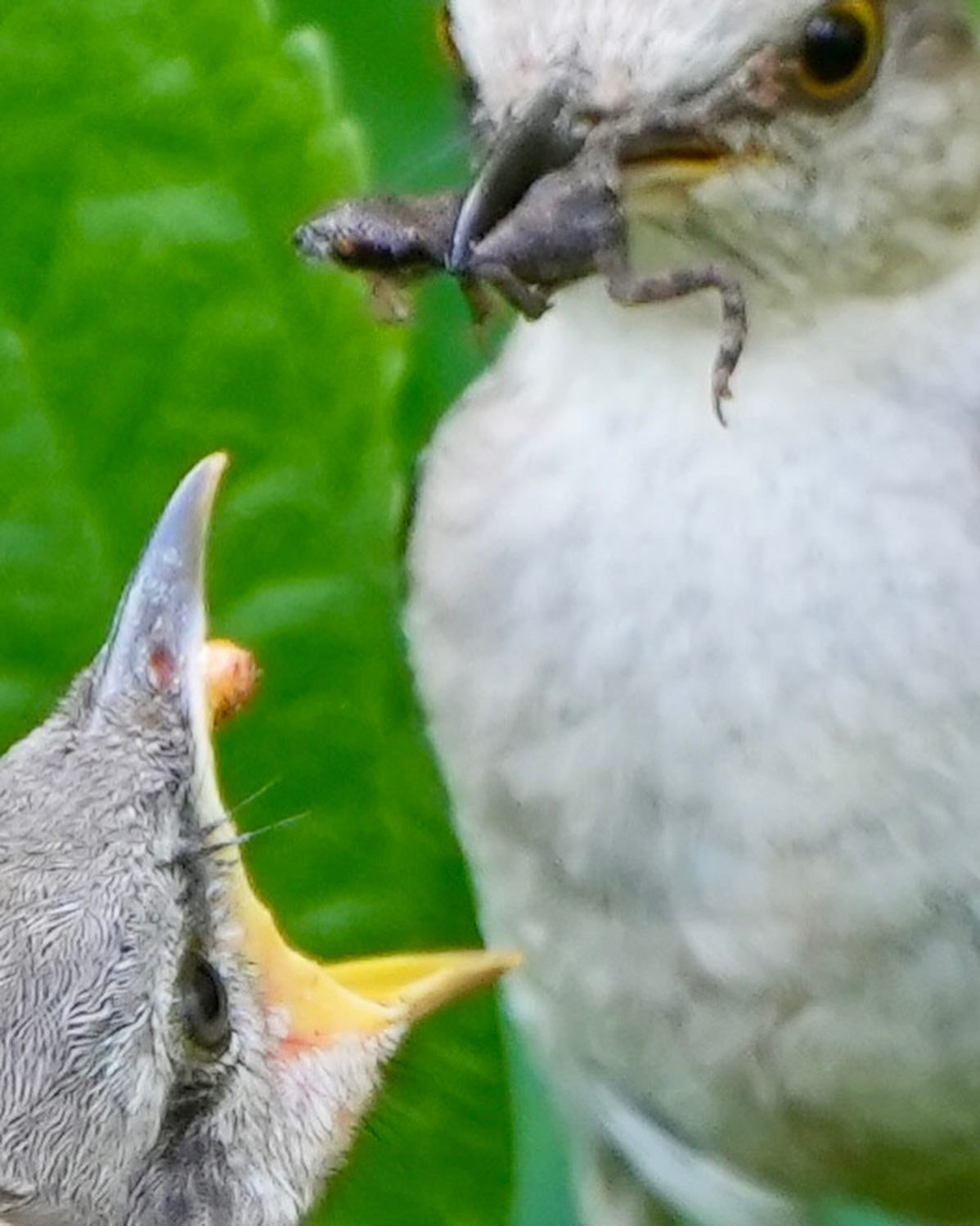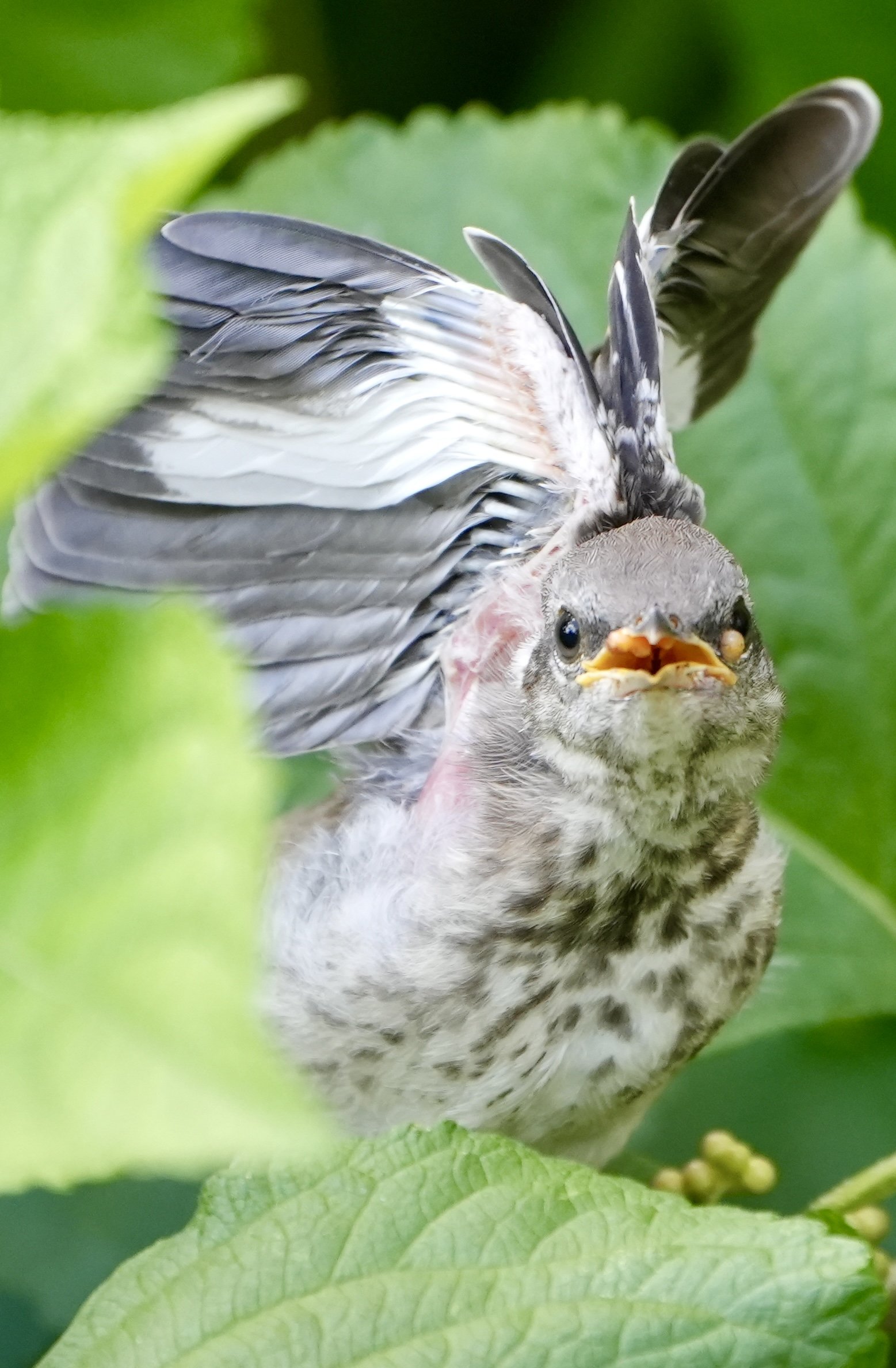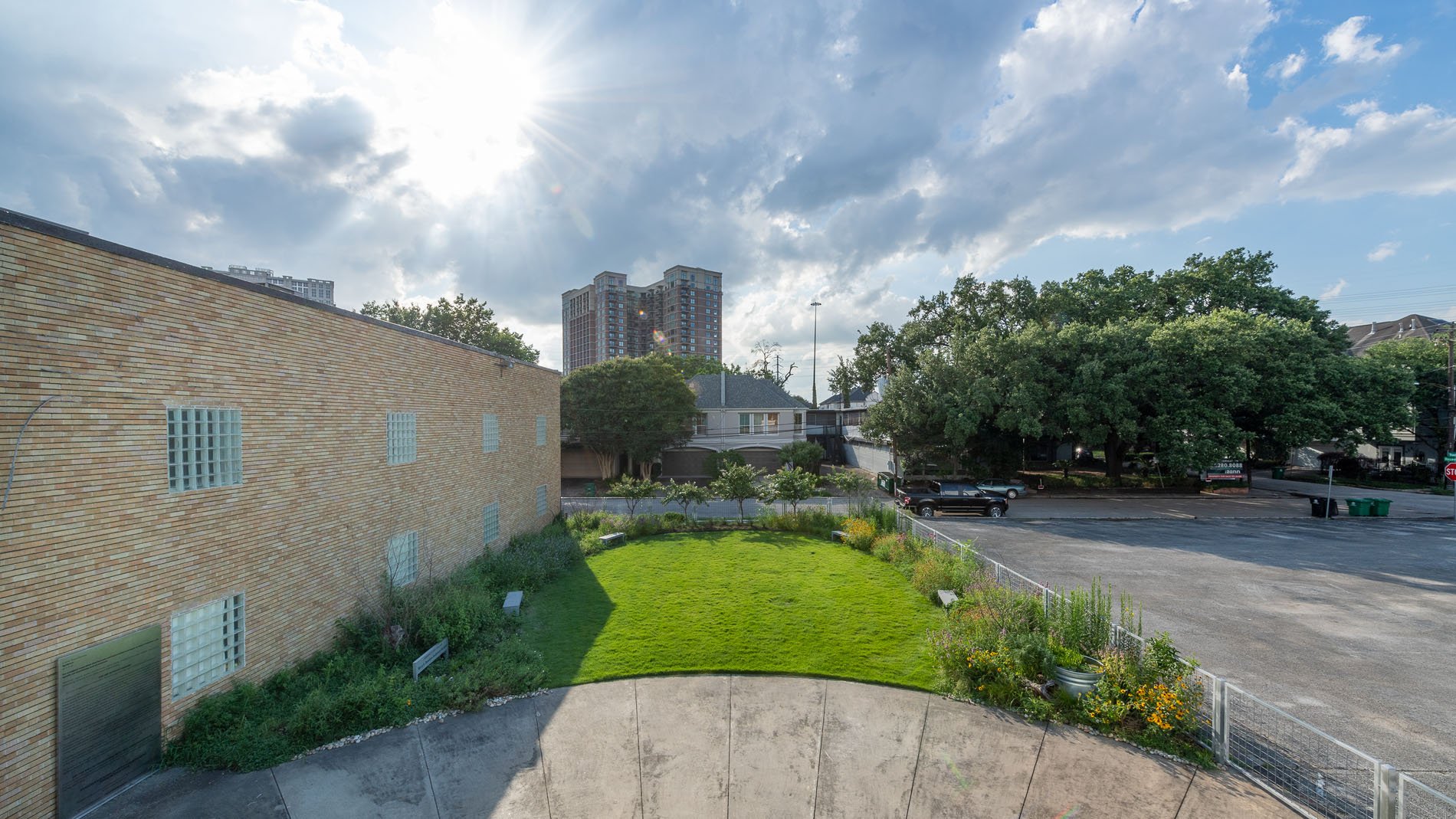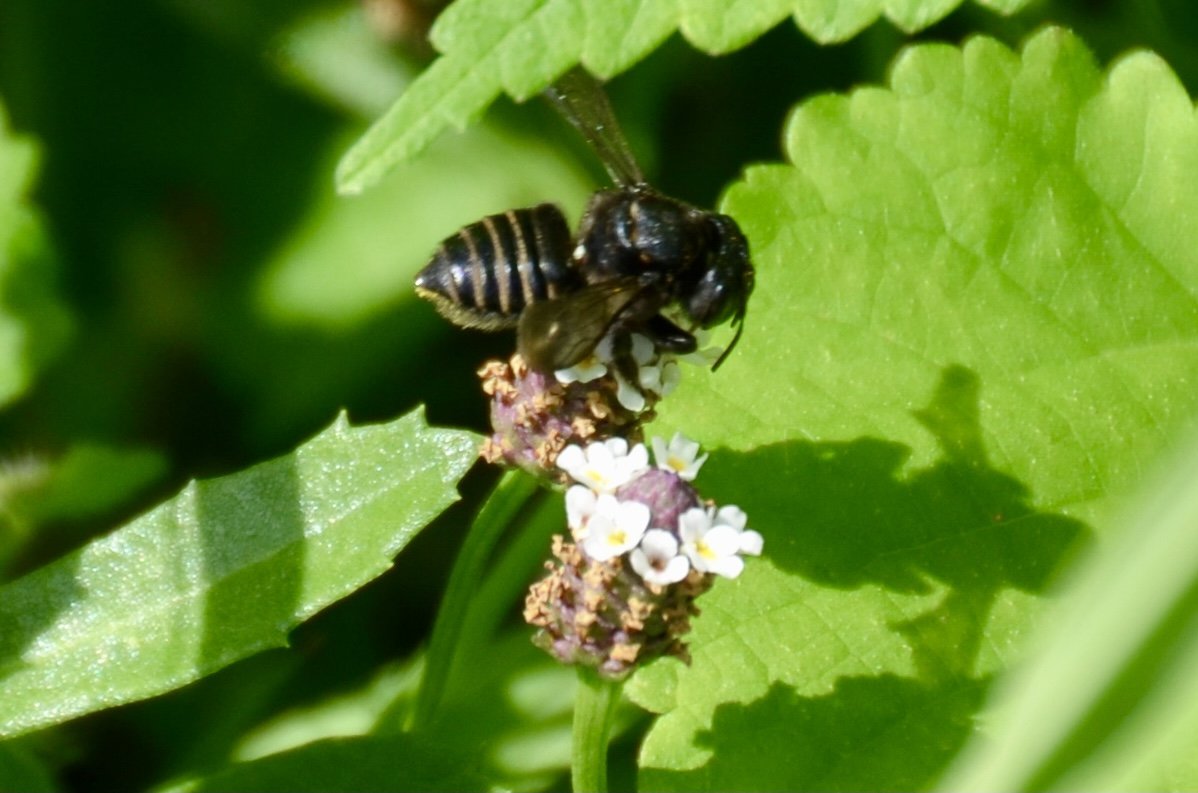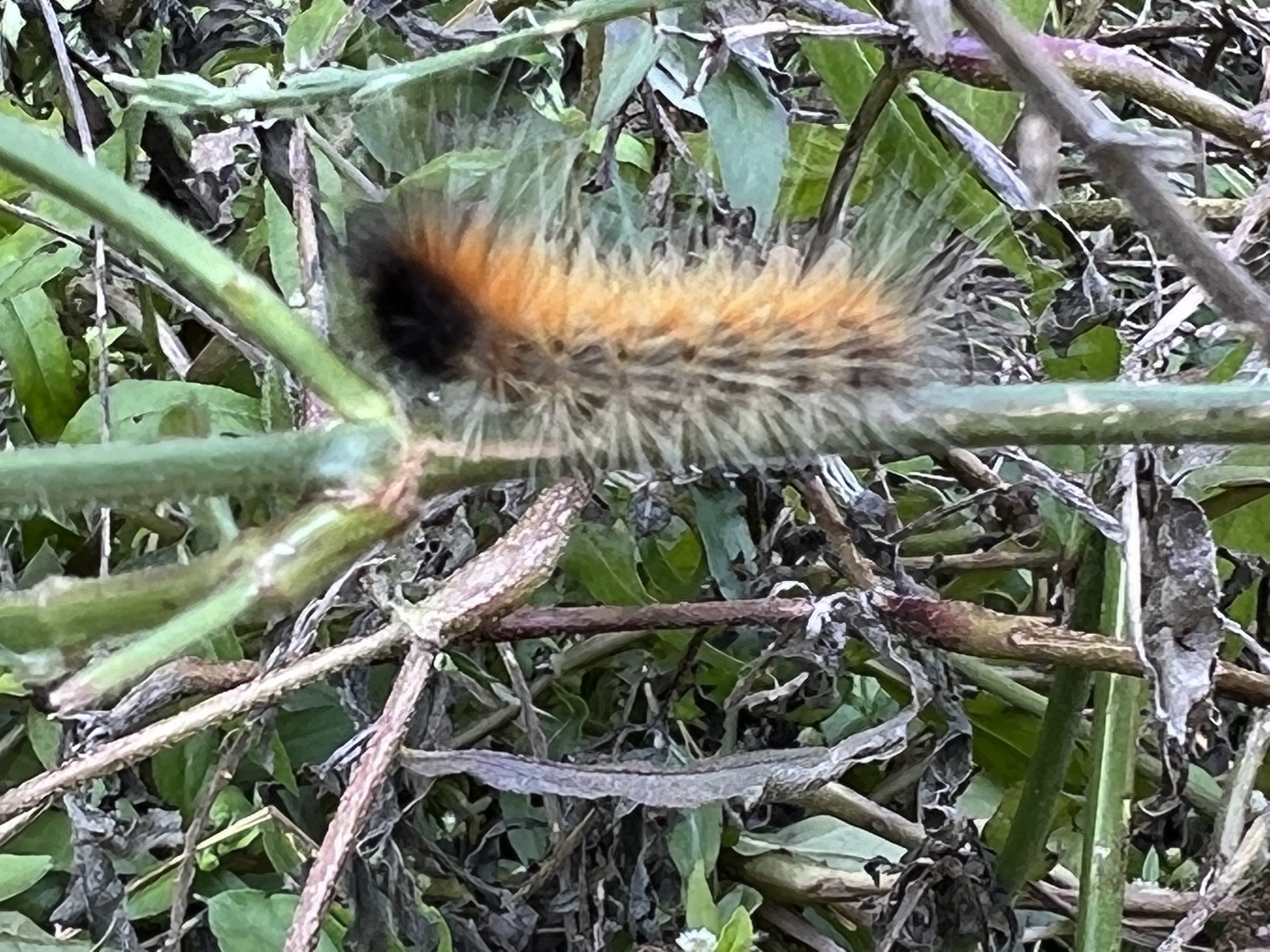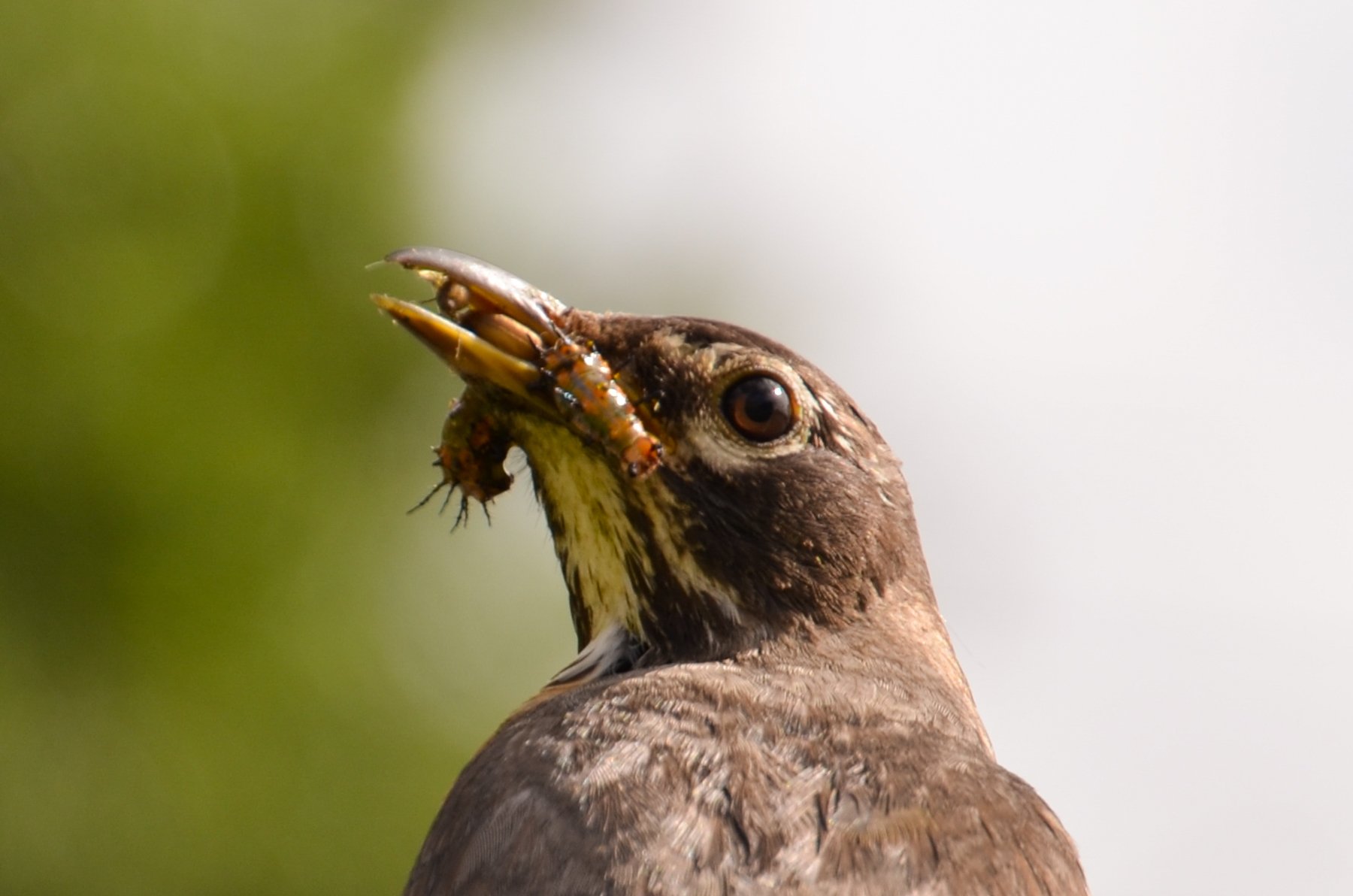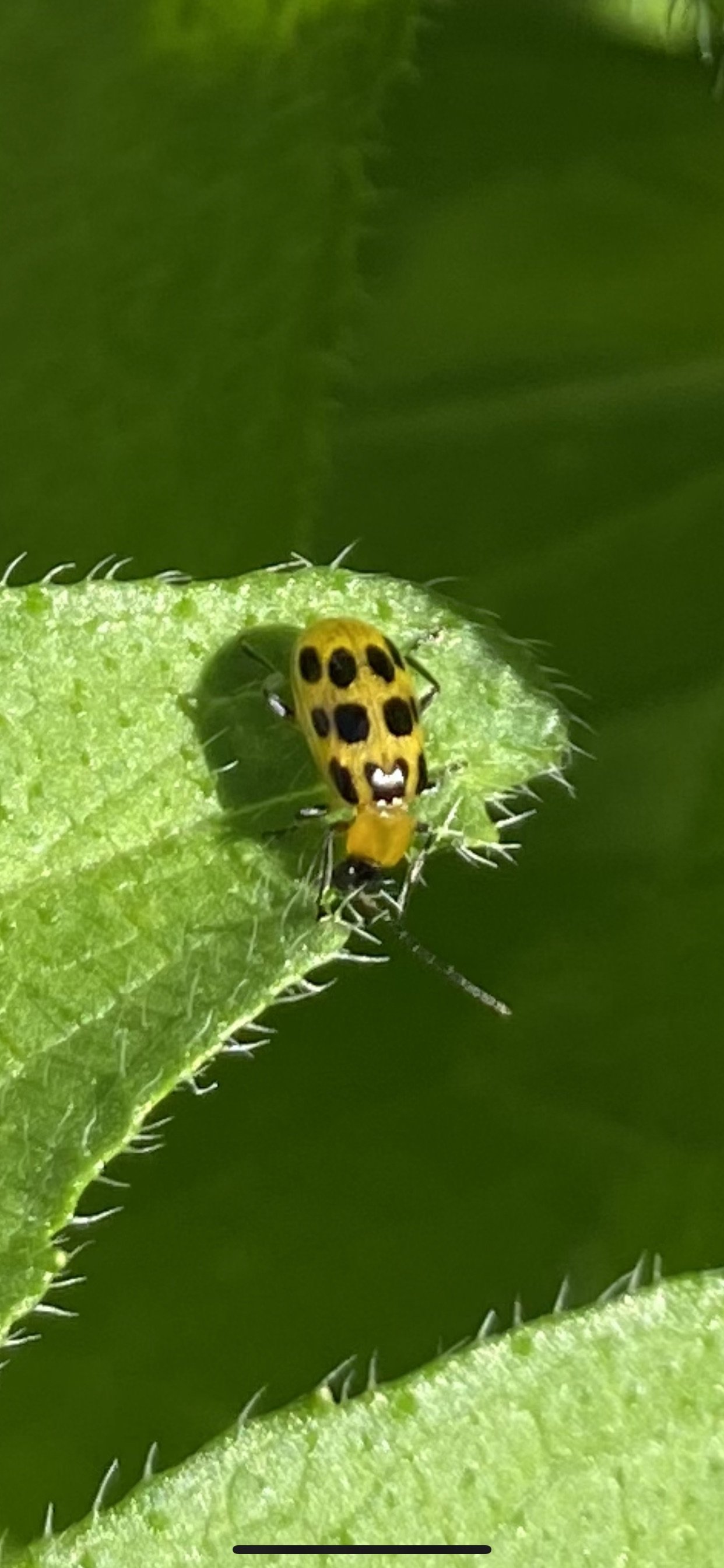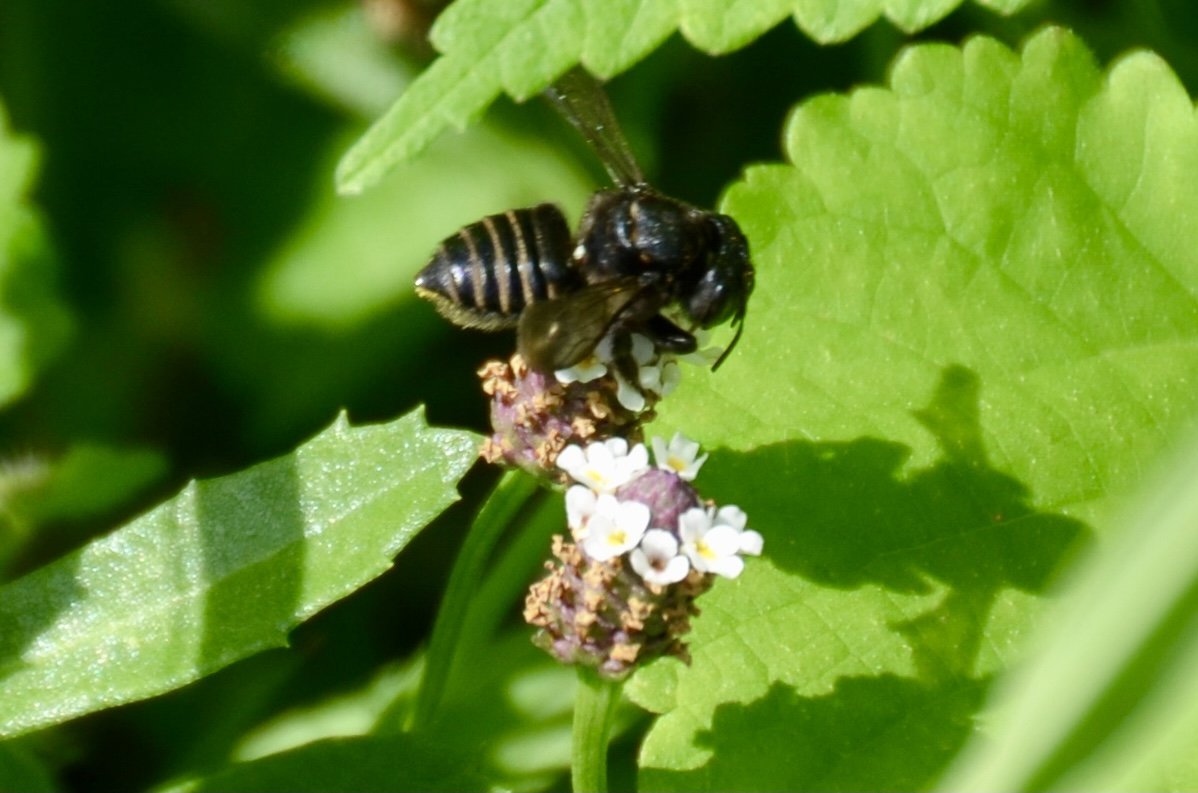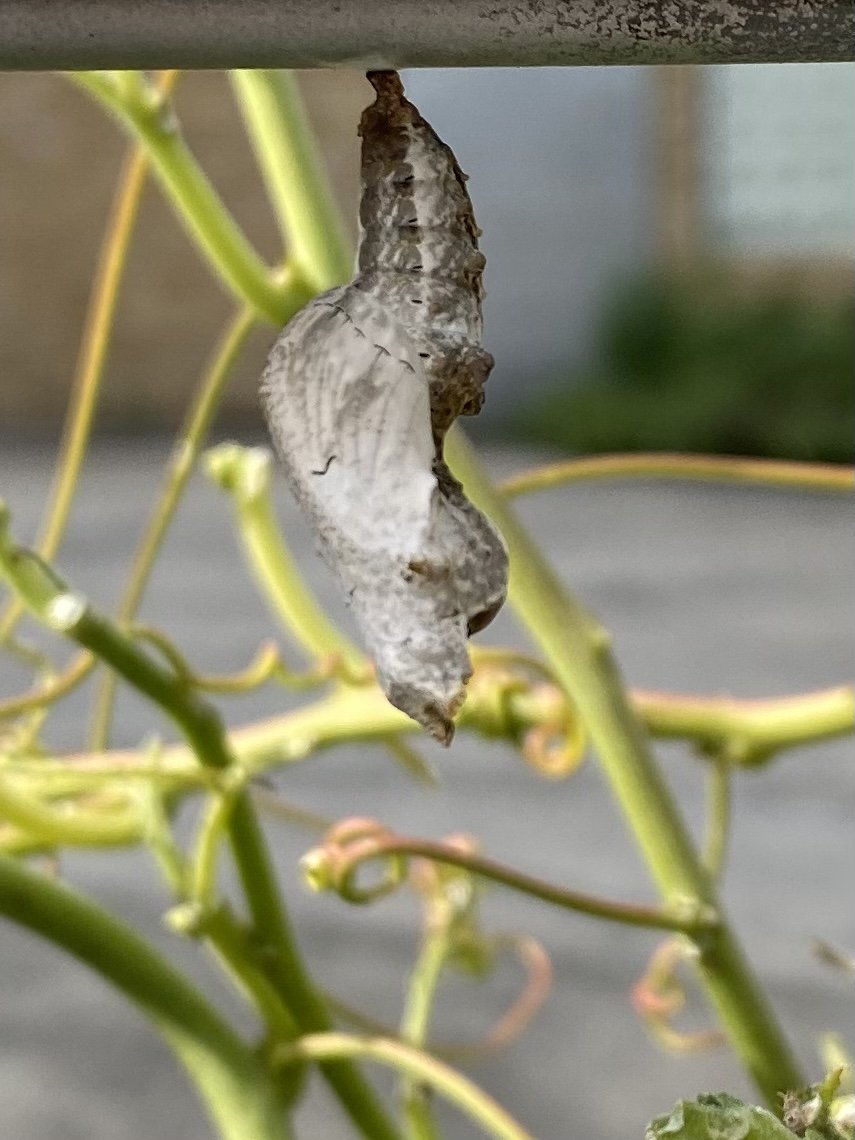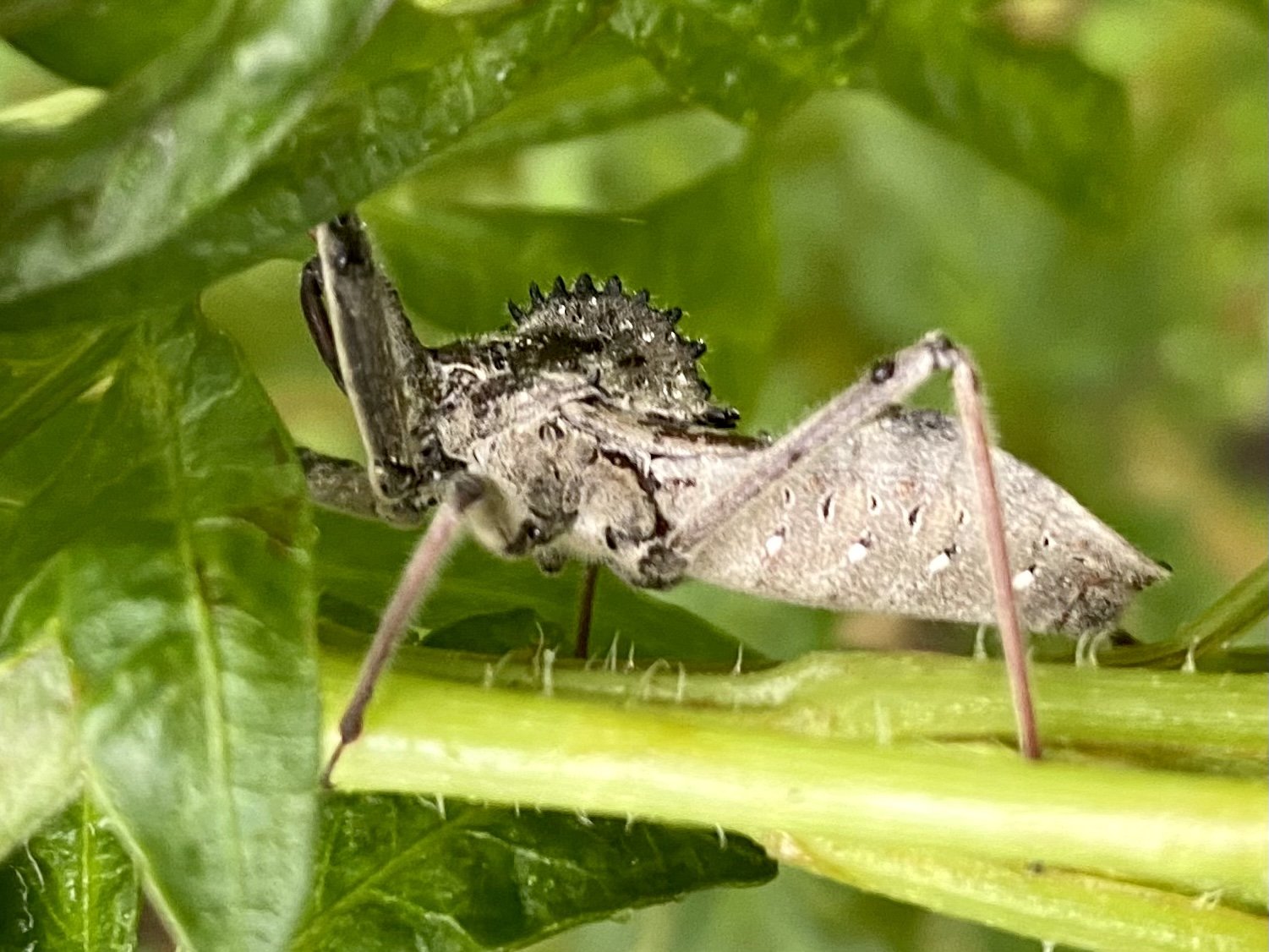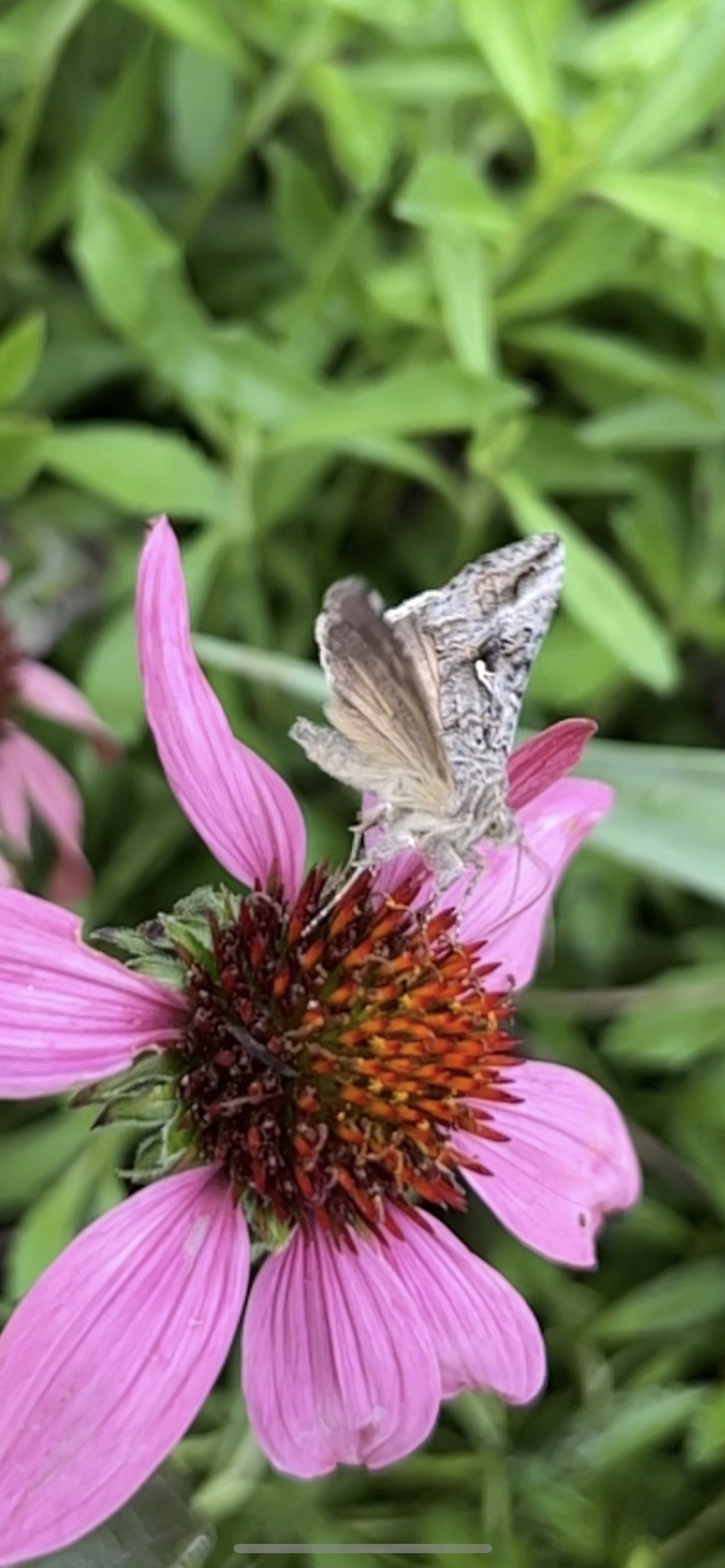Symbiosis — Gerhert Prairie Rescue plants
Gerhart Prairie in a drought
On October 7th, I was invited to participate in rescuing prairie plants from the Gerhart Prairie south of Houston. The Prairie, I believe, is part of the Texas Nature Conservancy. A manufacturer has a fenced-off area on the property. They will put in a road through the prairie to service the fenced-in operations. We were rescuing the plants in the designated place on the future road. Several Master Naturalists identified plants, as did Mark Morganstern of Morningstar Nursery. Mark kindly reaches out to me when free and needy plants are available.
That Saturday, I received an amazing list of the plants I rescued.
1.) Helianthus angustifolia (aka Swamp Sunflower)
this is the tall 'sunflower' plant with the very narrow leaves that have the edges rolled under.
(I think I may have inadvertently referred to this as Maximillian Sunflower, which is not what this is)
2.) Baptisia sphaerocarpa (aka Yellow Wild Indigo or Yellow False Indigo)
this plant is a small subshrub in the Fabaceae (Pea Family); it has trifoliate leaves without subending bractlets and it has bright yellow flowers borne on erect inflorescences. Its fruits are round, hence the Latin name sphaerocarpa which literally means 'round fruit'. It will bloom in the spring.
3.) Euthamia leptocephala (aka Bushy Goldentop)
This plant is in the Asteraceae (Sunflower Family) and is closely related to the goldenrods (Solidago spp.). Euthamias have round-topped inflorescences rather that the 'open-spray'-shaped inflorescences of the goldenrods. There are two species of Euthamia in our area -- the other is Euthamnia gymnospermoides (aka Texas Goldentop) -- it have longer and much narrower leaves than does E. leptocephala.
4.) Croton lindheimeri (aka Woolly Croton or Lindheimer's Hogwort)
This plant is a member of the Euphorbiaceae (Spurge Family). It has very small unisexual flowers surrounding by a yellowish tomentose hairs; the female flowers are borne near the base of the inflorescence while the male flowers are bunched near the apex of the inflorescence. This seeds of this species are an important food source for quail and dove and the plant is a larval host for several species of butterfly.
5.) Neptunia pubescens (aka Tropical Puff)
A member of the Fabaceae (Pea Family) in the Mimosoid clade (or subfamily) which means it does not have typical pea-shaped flowers. The flowers are bunched onto a round receptacle or head, each with a small inconspicuous corolla, but the numerous long stamens are quite showy. Neptunia pubescens sprawls along the ground. It is larval host plant for the ceranus blue (Hemiargus ceranus) butterfly and its seeds are consumed by many wildlife species.
6.) Lythrum alatum var. lanceolatum (aka Winged Loosestrife)
This member of the Lythraceae (Loosestrife Family) grows to be about 3-4 ft tall and produces long racemose infloresceces with smallish lavendar (pink,purple) flowers. It is a special value to native bees and is also used by hummingbirds and butterflies.
7.) Eupatorium serotinum (aka Late-flowering Boneset)
A member of the Asteraceae (Sunflower Family) which has rayless sporting only white disc florets. It is a perennial that emerges early in the year, but does not bloom until August - November. While it's flowers are small there are many of them, so that the plant is a real show-stopper in the fall. It is of special value to native bees and its nectar attracts butterflies and many other insect species and it seeds are eaten by many bird species. The plants you dug up were fairly small (maybe due to the drought this year; the species usually grows 4-5+ feet tall.
8.) Agalinis heterophylla (aka Prairie Agalinis, Prairie Geradia, False Foxglove)
This is a member of the Boraginaceae (Borage or Broomrape Family). There are several species found locally, but the most common is Agalinis heterophylla, easily distinguished by its deeply lobed calyx. It is a larval host for the Buckeye butterfly and attracts numerous insect species, including bees and bumblebees.
9.) Ludwigia octovalvis (aka Mexican Primrose Willow)
A member of the Onograceae (Evening Primrose Family), this plant likes its feet wet, so a low spot that collects water is a great place to plant it. It is fast growing and reseeds readily. It is a nectar source for butterflies and other insects and is a larval host for the water primrose hornworm moth (now there's a mouthful!).
10.) Conoclinium coelestinum (aka Blue Mist Flower)
Another member of the Asteraceae whose flowerhead do not have ray florets, but the long stigmas of the disc florets make for a showy flowerhead nonetheless. This species is NOT an annual (as I misinformed you yesterday, sometimes things stick erroneously in your mind), but rather a perennial that dies back to the ground each year and also spreads readily by seed. It attracts many late-season butterflies. It can be a bit 'bossy' as Mary Spolyar put it, but as I have found with vigorous natives a bit of pruning/thinning doesn't hurt them in the least.
I look forward to watching them thrive in Symbiosis.
The rescues
Symbiosis Relationship 9/2022
Skipper and Pokeweed
Endangered bumble bee and Salvia
Coral honeysuckle and a native bee.
Mocking bird using an American Westeria vine as a lookout for insects to eatt.
Passiflora incarnate and carpenter bee.
Turkey tail mushrooms breakdown rotting trees recycling the nutrients.
Jumping spider
Pachodynerus erynnis, known generally as the red-marked pachodynerus or red and black mason wasp and Lantana camera. Lantanas are complex, I am not certain if this is a native to tropical US or an import. I think it is camara since I see beetles and wasps on it.
Clouded skipper on Lantana camara.
Common green June beetle and lantana camara.
Genus Pyrisitia minisa Yellow butterfly
Golden-reined Digger Wasp
Despite its vivid alarm coloration, the Great Golden Digger Wasp is not an aggressive species of wasp. They tend to mind their own business and can be found sipping on flower nectar during the summer, but in the early spring, females prepare to lay eggs.
Females will dig into loose soil and create many deep tunnels. When established, she then covers them to hide their existence. A female will track a small insect and sting them to paralyze them, but not to kill them. Once the prey is immobile, she will clutch it using her antennae and mandible (mouth parts) in order to fly it back to the tunnels. While in flight with her prey, it is not uncommon to see birds like robins or tanagers attempt to steal her meal from her by chasing her until she drops it. No other known species of Digger Wasp is known to be harassed by birds in this way. If the female is successful in returning to her tunnels with her catch, she will place the paralyzed prey aside to quickly inspect a tunnel. If it looks like it's still intact, she will pull the paralyzed insect, head first, down into it. She then lays an egg on the insect, exits the tunnel, and covers it over again. She repeats this process for each tunnel. Unlike other wasps, she does not actively defend her nest. Once hatched, the wasp larvae will feed on the living, yet immobile, insect until they are developed enough to leave the tunnel lair in the summer. Eventually, the parasitism of the paralyzed insect kills it.
Scientists are studying the behavior of this unique species. Great Golden Digger Wasps seem to display a type of internal programming. If their insect prey is moved away from the tunnel while the female inspects it, she will emerge, relocate it, bring it back to the tunnel entrance and start the inspection all over again. Every female exhibited the same repetitive 'start inspection again' behavior when tested in that way.
Females have also shown that they do not keep a tally of how many insects they catch versus how many tunnels they create. If some meals are stolen by birds, they do not realize that they are short on insects compared to tunnels.
With such gorgeous orange and black coloration, mild demeanor, and interesting behaviors, the Great Golden Digger Wasp is one to admire, not destroy. Perhaps a careful observer will discover even more fascinating things about this species.
Rumblings - Agapostemen Virescens
This is part of a large body of work I started in 2019, Rumblings.
I pressed this monotype in 2019. I loved parts of it and not others. In 8/2022 with pastels I addressed the issues that we're not working on. I am pleased with the minute beast.
Agapostemen Virescens
watercolor and pastel monotype
30” X 44”
Little is known about this metallic green eye-catching Agapostemon virescens, a bicolored striped-sweat bee in the family Halictidae. It is commonly found in North America and is the official bee of Toronto. Its metallic green head and striped abdomen make it identifiable
The bicolored sweat bee is a solitary ground nesting bee. Each spring the female will dig a tunnel in an open patch of ground. Off the tunnel will be several branches. After building her nest, the female will gather pollen, take it back to her nest, form it into a ball with a little nectar and place it in one of the branches before laying an egg and sealing off that branch so each egg will have its own “room.” -.backyardecology
The white pedestal?
When I started in the MFAH Glassell School block program, I needed pedestals for my smaller sculptures. I made stark white cubes as I saw in museums and galleries.
Over the years, my work has transitioned to tell a specific story. I make work to reveal the beauty in diversity, the messiness in the natural world and the connections between all living things on the planet. And most importantly, I work to inspire society to step into a rhythm that will flow with the natural world and celebrate the beauty in its messiness. My work conflicts with borders that separate, clean lines that divide and sterile objects.
The white cube pedestals are a symptom of sameness, monocultures and sterile environments, a symptom of me wanting to ” look “ like I belong and fit in. A change is an imminent.
I am leting my eyes and mind play with how objects that physically support my work should look. Work that reimagines urban landscapes to balance humanity and natural systems should not be sterile cubes. What should, - what could they be?
The images below are some thoughts I am considering. .
Rocks
Bricks
Stones or concrete.
Cracks
Dried plant material
Electrical wire
Upcycled lawn furniture.
Palm tree trunk skin
Salvaged construction site rotting root with interesting chain link necklace imbedded across her shoulders.
Symbiosis - relationship 8/2022
Orange blister beetle and Ratibida columnifera
prairie cone flower. The beetle eats problem insects.
Gulf fritillary butterfly's mating and green anole ruins the mood.
Xylocopa virginica, the Eastern carpenter bee has evolved to the exact height to Maximize pollinating Passiflora incarnation. This relationship is one of my favorites in Symbiosis.
Soaking wet American bumble bee (endangered bee) using a Missouri ironweed leaf as an umbrella.
black mud daubersa, is a solitary wasp. This female his hunting for caterpillars to provision her mud nest. Plants recognize the vibrations of caterpillars chewing. This causes the plant to send out pheromones to attract wasp to keep the caterpillars down. She seems frantic.
Ascra bifida, exploring crabgrass and Marsh Fleabane (both volunteer plants) hunting for moths, caterpillars, harmful beetles, aphids and other pests. They are valued citizens in “Symbiosis”. Oddly there is very little online about this sweetheart of a stink bug.
American Mockingbird and American beauty berry.
On the left side of the image perched atop the dead olive tree a Mockingbird searches for insects. Camaflouged by the orange trick background a juicy dragonfly flies into to the upper right corner of the frame and catches the alert Mockibgbirds attention.
Cyathus stercoreus
Dung-loving birds nest fungus also known as splash cups.
Cyathus stercoreus
Dung-loving birds nest fungus also known as splash cups.
When a raindrop hits the cup's interior, the peridioles are ejected into the air tearing open the purse. In the lower part of the purse, the coiled funicular cord expands. The peridioles, followed by the sticky funicular cord and basal hapteron, land on a nearby plant stem or stick. Flying through the air, the line wraps around the plant's stem. The peridiole remains attached to the vegetation. In a natural setting, a grazing animal may eat it and later deposit it in that animal's dung to continue the life cycle. This amazing amazing creature breaks down dung, and captures raindrops.
Brown Anole
The ESTERN CARPENTER BEE AND PASSIFLORA INCARNATA
A dragonfly lays eggs in the still water of a trough pond. Her nymphs keep the mosquito larvae in check and are protein for the Texas mosquitofish.
Symbiosis - The first anniversary and a feisty or rebellious future.
What would the next twelve months look like?
A two-year-old can be feisty, or would it be more like a rebellious teenager coming into its sexuality?
April of 2021, I started installing the plant material in “Symbiosis.” Seeing, hearing and smelling the transformation has been a gift. This past spring marked the first anniversary. This post celebrates the relationships and natural systems I have documented from the first anniversary through mid-August.
Keep in mind that in the summer of 2020, when I agreed to install a site specific living sculpture, I went every day to observe the space. Sitting and looking — observational research is a big part of my work.
How did it function in the ecosystem? The mowed nonnative zoysia turf grass was neat within its “borders.” The nonnative shrubs and plants were in aligned rows amongst compressed dirt and it was static. As the summer days warmed the bare spaces, the rising heat never created any movement in the garden. It was designed in rows and easy to maintain with gas-powered mowers and edgers. The first soil test revealed that the garden was void of life. The lower food chain of earthworms and grubs was absent. That explained why the birds flew by without landing. There was nothing for them to forage or seek shelter from predators. It did not soak up much water and sequestered little carbon. Lawndale’s Sculpture Garden was a dysfunctional plot of earth. It was green but not part of the coastal prairie ecosystem.
In a sea of Midtown asphalt and groomed properties in April of 2021, I questioned; would any wildlife find the small space? Failure was possible.
Nature was undeniably resilient in year one. Symbiosis was a living sculpture, a functioning part of the coastal prairie and the New World. The installation was not land art; it was a living ecosystem. It regenerated life.
On Mother’s day after the first big rain, the pond was full of white green treefrog eggs. The relationship between amphibians and clean water and important in building the lower food chain and keeping it in balance. for more details see the post Symbiosis — Green Treefrog Eggs.
Cricotopus rests on the Lawndale Art Centers building. This image is symbolic of a nonprofit art institution’s commitment to it's relationship with the natural world. Hopefully it will inspire others.
Large carpenter bee on a trumpet vine bloom.
Mutation of a rudbeckia hirta. A reminder that being different is beautiful.
the chemical free trough pond provides a habitat for toads to mate and leave their eggs. The tadpoles in return eat algae keeping the water clear and mosquito larvae. #social sculpture.
White-striped longtail enjoying a Rudebeckia hirta bloom.
Anole asserts his dominance on the trunk of a dead olive tree.
Ischnura hastata Citrine forktail on a frogfrut leaf.
Blue dock beetle enjoying the nutrition of a volunteer plant.
Spilosoma Virginia on a Rosinweed sunflower leaf.
Cricotopus Non biting midge on Rosinweed leaf.
Hippodamia convergens convergent lady beetle, on a volunteer plant.
unknown - But interesting
Celithemis fasciata and frogfruit.
Native bee _________ and Rosinseed sunflower.
Repipta taurus , Red bull assassin bug and painted blanket leaf.
Dolba hyloeus pawpaw sphinx and fall bedient plant
the perfect match a native carpenter bee’s body has evolved over the ages to fit the Passiflora incarnata perfectly.
Libellulidae- skimmer and docks. I often find skimmers perched on this past dried docks. They have a strong bond.
Mother Mockingbird feeding juvenile a tiny toad.
Juvenile Mockingbird perched on the manmade fence.
great blue skimmer (is a dragonfly) and the spent thimble flower.
2 Leafcutter bees mating.
2 Leafcutter bees mating and a spent painted blanket bloom.
Atalopedes campestris (called sachem in the United States and Canada) is a small grass skipper butterfly and frog fruit.
Another view
Hemiargus_ceraunus and frogdruit.
Umbrella paper wasp and spent sunflower.
Paper wasp and passion flower. PLANTS CALL WASPS TO THE RESCUE WITH AN AROMA THE INSECTS LOVE. This is a special relationship.
More (green eyed) leaf cutter bees mating again on spent painted blanket bloom.
Male Eastern Carpenter bee- check out those big green eyes and fall obedient plant.
Sphex Digger wasp. On passiflora incarnata
Obscure Bird Grasshopper shaded by the leaves of Turks cap.
Battus philenor, the pipevine swallowtail or blue swallowtail and a morning glory vine.
Gulf fritillery butterfly and a passiflora incarnate
Dolba hyloeus (pawpaw sphinx) is a moth of the family Sphingidae and a fall obedient bloom.
Follow up post coming soon
Female common Whitetail skipper and a dried stem of a Rosin weed sunflower.
Leafcutter native bee and frogfruit.
Spiderweb that and dew . Does the quenching dew lure prey into the spiders web. I see a relationship between the spider and Earth’s closed water system.
Leafcutter bee and blanket flower.
Leafcutter bee with a petal of a blanket flower Gaillardia pulchella. They use the petals to build their nests.
American toad And Earth’s closed water system.
American toad out for a stroll during the rain.
Plushback fly and Salvia azure.
Another species of leadcutter bee cutting a bllanket flowr petal.
Swallowtail butterfly and white veined morning glory.
Swallowtail butterfly depositing an egg on white veined morning glory. Follow up post coming soin.
Jumping spider and fall obedient plant.
Plushback fly and blue salvia
The relationship between rainwater or dew and plants is a crucial part of any ecosystem. In this case the few is is on a stem of crabgrass. If you run your fingers down the stem you will notice the texture that slows water from running off it's surface too fast.
Dew and stems
Carpenter bee and Salvia azure
I have noticed that plant material on the edges of symbiosis stops garbage from blowing from the convenience store. I see this as another way plants are in partnership with our various ocean.
Anole safely camouflaged in the chaotic lines of the vines mixed with a diversity of plant stems.
Juvenile mocking bird on a dead olive tree branch. I saw about six of them hiding in the American beautyberry after the rain. Now that the installation is a year old, it is getting height and layers. This added heights provides the birds with more protection, berries and perches for hunting small prey.
Stink bug on American beauty very.
Carpenter bee getting a back rub wile collecting nectar and pollen on a purple passion flower.
Sphex habenus, Golden-reined Digger Wasp and Rosin weed sunflower.
Sunlight nesting in Rattlesnake master.
?
Subtribe Hesperiina And milkweed.
Subtribe Hesperiina And frogfruit
? Bee on Rattlesnake master
roseate skimmer and fall obedient plant.
Skipper on bloom less salvia stem.
New World Checkered skipper and everybody’s buddy frog fruit.
Sor ies of fly sleeping in butterfly faea Bush.
Rumblings - diversifying and implementing systems thinking.
All living and nonliving matter are connected in form or system. Through my work on “Symbiosis,” I have witnessed the power of holistic management, also called systems thinking. I can see that Changing our decision making process to consider whole systems and connectedness is the solution to our environmental and social issues. Changing how society thinks is the driving force in my art.
With this new awareness I am inspired to consistently reflect it in my work. I have decided to rethink “Rumblings,” which began as a collection of monotypes of 50 of the 10,000 bee species. It wasa mono crop of bees. However, you can’t separate the interconnection between bees, humans, or other living organisms and the earth's natural systems. We are all part of the living planet Earth. I will start applying systems thinking to all my installations. “Rumblings ” will celebrate the relationships among a diversity of species up and down the food chain. I will weave into these pieces the relationships that whisper of Earths biological processes and Physical and chemical Elements. The connections can be obvious or subtle, they can be unmeasurable or invisible. This will be fun.
Green Tree Frog Eggs
We had the first big spring rain the week before Mother’s Day. That Saturday , I stopped in "Symbiosis" to check out the wildlife and chat with anyone visiting the exhibitions. To my surprise, the pond is now a green tree frog nursery. The trough pond is surrounded by tall native plants that tree frogs love. I have not seen the green tree frogs since last year, I thought I heard them one night few weeks ago. Mother toads and tree frogs have to have water to lay their eggs. I believe tree frogs lay their eggs on limbs where they fall in the water.
Above are a few watercolor monotypes I did of the tree frog.
Symbiosis- Food chain - Mockingbirds and Toads
On an early July morning, with a new camera in my hands, I was hopeful the zoom lens would document unseen details in Symbiosis. I focused the lens on the “feed me” gesture of the juvenile bird. Later zooming in on the image on my computer revealed the middle of the food chain — A Mockingbird feeding a juvenile, not a caterpillar, wasp, or an insect but a slight blurry silhouette of a toad. On my laptop, I witnessed the middle of the food chain, a moment in a living sculpture, evidence of a healthy ecosystem and hope in a sea of asphalt on the Gulf Coast.
In Symbiosis building, a food chain that has not been exposed to chemicals or pesticides is crucial to building a base and armature that supports the more visible kinetic elements — wildlife and humans, the upper food chain. Its strength is critical to the success of the whole.
I use systems thinking to plan and organize my sculptural additions and extractions to the piece. In this case, not using pesticides to control insect pests or unruly vegetation is a priority. The water feature in the garden invites mosquitos, dragonflies, frogs, toads, and aquatic insects to lay their eggs in the still water. The tadpoles, nymphs, and Texas mosquito fish eat the mosquito larvae.
In the work, all of the individual species are linked by the health and abundance of the lower species. “Symbiosis” is an element of the “living” Earth, a community of organisms existing within the Art center's sculpture garden and social sculpture.
Land Art vs Living Sculpture
Land art or earth art has paved the way for what I hope will become a new art movement.
The Tate defines Land art or earth art as the art made directly in the landscape, sculpting the land itself into earthworks or making structures in the landscape using natural materials such as rocks or twigs. With the Tate's definitions, Symbiosis is land art, a part of the conceptual art movement, and environmental art.
What separates Symbiosis from these traditional classifications of art are the concepts I apply to my creative decision-making process and the materials I use support and regenerate life. It values all living creatures as participants in the creative process.
My process for creating a living sculpture involves holistic decision-making. First, I incorporate a systems thinking approach to create a functional balance between the healthy ecosystem, human economics and societal landscape norms. For example, contemporary landscape designs are structured in monocrop rows or groupings separated with bare earth. To maintain the manicured design, weed-killing chemicals and gas-operated mowers and edgers are the most economical. This lack of plant diversity, geometric-in-shape groomed plantings, and chemical inputs make these landscapes uninhabitable for a diversity of wildlife other than a few lizards. For many valuable insects and microorganisms, the inputs are deadly. These designs do not consider supporting the food chain necessary in a healthy ecosystem. In Symbiosis, I keep the ground covered with a diversity of plantings that drift in and out of each other and with the seasons; this provides camouflage from predators, nesting materials, and a variety of nourishment all year. Weeds fit into this landscape and help build the microorganisms and structure or armature in the soil. This less structured planting design is balanced with a classical symmetrical layout. Symbiosis is designed to build the food chain. The maintenance required is easily accomplished with handheld clippers. The clippings are put back into the garden to decompose by insects and natural systems that build the soil health and retain water and carbon, or into a vase to be enjoyed. Ultimately Lawndale benefits economically through lower maintenance, chemical inputs, and utility costs, while enjoying a toxin-free environment—living sculpture.
I use materials that support plants and wildlife specific to the site's ecological history. I begin with a water source, animal waste and decaying plant materials native to the area. These materials build habitat and nourishment for microorganisms in the soil, in the water feature and up the food chain to sustain each other in extreme Texas weather. When combined with our clay soil they: store carbon, cool and return water to the aquifer, support life beneficial to humans and keep harmful pests at bay. In addition, they assist in cleaning the air, slowing rainwater, and reducing land erosion.
For example, I have created symbiotic relationships between humans, mosquitos, dragonflies, fish, and chemical-free water. In a hot environment, animals need a freshwater source to drink and reproduce. I installed a small pond without a filter or pump. Using plants to filter the water, I utilize the eating and waste habits of the Texas Mosquitofish to control the algae and build the water's biology. Mosquitos and dragonflies are attracted to still water with a balance of healthy bacteria and algae to deposit their larvae. The larvae become protein for the fish. Attracted by the water source, the dragonflies hover above the garden and on dried plant materials hunting mosquitos, supporting human health. Lawndale benefits economically by not utilizing an electric pump, needing a mosquito misting machine or pesticides and enjoys the beauty of the water feature and a kinetic, ephemeral rainbow of dragonflies hovering and darting over the living sculpture.
In Symbiosis, as the lower food chains develop, it begins to regenerate life and recover what is lost. Perpetual, it is art for now and future generations. In a living sculpture, the ways to evaluate it are space, shape, line, color, texture and regeneration.
I submit below images and descriptions of symbiotic relationships, ephemeral parts of the installation from April 2021-April 2022.
Dung loving birds nest fungus
Gulf Fritillary butterfly on rosin weed sunflower. It roots can extend 16’.
image by Nash Baker courtesy of Lawndale Art Center
Black Swallowtail (Papilio polyxenes) on Monarda citriodora lemon beebalm image by Nash Baker courtesy of Lawndale Art Center.
Gulf fritillary butterfly on Gulf verain Verbena xutha image by Nash Baker courtesy of Lawndale Art Center
Battus philenor a pipevine swallowtail
Gulf fritillary on Rudkeckia hirta
Long-tailed skipper Urbanus proteus on Salvia azure
Junonia coenia the common buckeye butterfly on a blanket flower Gaillardia puchella with dew drops.
Black Swallowtail (Papilio polyxenes) on scarlet sage Salvia coccinea.
Gulf Fritillary butterfly on purple cone flower
Red arrow Rhodothemis lieftincki on dead olive tree limb.
Mosquito control and water source for winged species.
Past bushy blue stem and Seaside Golden rod. I leave them through March so the winds can spread their seeds to other gardens, and to provide shelter for birds, tree frogs, toads, and field mice.
Plathemis Whitetail Skimmer
Mosquito control and water source for winged species.
Past bushy blue stem and Seaside Golden rod. I leave them through March so the winds can spread their seeds to other gardens, and to provide shelter for birds, tree frogs, toads, and field mice.
Brown skipper and Rudbeckia hirta
Symbiosis- invasive species
Hairy Crabweed Fatoua villosa is the only invasive species I have discovered in Symbiosis.
It gives me confidence in my landscape philosopies when I read research publications that support my observations of “Symbiosis.”
In July, Houston received an extraordinary amount of rain. That is when I discovered an invasion of Fatoua villos. Aware of the harmful effects of invasive species such as kudzu, I panicked. I went into industrial irradiacation gear. After two days of pulling the hairy-plant-beast from the beds, I noticed many of the native plants were suffering from too much water. I also noticed the native plants in the beds that I had not pulled we're not struggling. I stopped the pulling of the species. That is when I adopted a weed or invasive species management philosophy. Now I carefully observe how each species is impacting the naticve plants, the wildlife and the visual impact of the sculpture. Below is an article from Science Daily that supports my observation.
“The paper's implications suggest that faced with declining fisheries, threatened reef ecosystems, and changing climatic and oceanic conditions, the value of ecosystem services provided by some invasive species, e.g., mangroves, may outweigh their negative effects. Therefore, the decision-making process involved in managing some invasive species warrants more careful consideration of both costs and benefits provided to the ecosystem.
"In a static world, invasive species are bad because they disrupt ecosystems," Granek said. "But we're living in a world where the environment is changing. The climate is changing. The oceans are changing. That changes the calculus of how bad some invasive species are to the habitats they've been introduced into."
Symbiosis - where are the birds?
For several weeks I have noticed the neighborhood birds are not stopping into Symbiosis. I have asked the neighbors and they have noticed the birds were absent too. Today an article came out in the Houston chronicle, Songbirds Take a Break.
March 19th - first bird in garden. An Amerucan red robin foraging for insects, bugs, protein or seeds, poking it's beak into the newly installed living compost.
March 31, 2021 robin hunting for grubs as I install the American beautyberry.
April 9, 2021 robin on the oak stump. I installed rotting native tree stumps to give the birds a camouflaged lookout and hideout.
April 9, 2021 dove
May 22, 2021,
blue jay
May 1, 2021 American red robin
June 19, 2021
June 22, 2021
Endangered Knowledge: The Soul of Humus
The armature with lath wired to it. Both back legs have material tests on them.
The surface material and how it will age/dry is a mystery. The arnature is the same atmature that I have used on all of my life size sculptures. The late Donald Tucker a local faux bois artist taught me this method. On the faux bous furniture, the finish is a concrete composite. On the other life size sculptures I have used concrete and hydro stone.
BROKEN
steel, reinforced concrete, and wire
40" X 29" X 55"
2018
photo by Nash Baker
Sonata in 4D - welded steel, lath, wire and plaster
2018
Photo by Nash Baker
HARVEY HEROES - LIVEstock BRINGING HOME THE BACON
66” X 42” X 60” - welded steel, lath, wire, wire cloth and hydro stone.
2019
Anniversary bench- Welded steel, concrete
2011
Endangered Knowledge: The Soul of Humus
I attach the lath with airplane safety wire. Think of lath as the skin. Once the armature is covered in lath/skin, I will add the fur/soil/dried native plants.
Symbiosis art activism update - landscape ordinance.
One of my goals as an artist is to inspire city Landscape policy change. Our cities landscape policy evolved before we had the telescopes to understand the living systems below ground. It is Necessary to update these policies that regulate or urban landscapes and utilize the power of out native landscape.
I have made great headways with discussions with city council person Sally Alcorn. She has supported my work and thoughtfully listens to what I am saying. I can see in her face and her actions that applying these regeneration agriculture principles to urban landscapes makes sense to her. She has worked in the city government for many years and understands how the machine works. She does not have landscape policy roots in her background which actually is a good thing, she does not have to unlearn. In the last few weeks, I have facilitated connecting her with two people in the native landscape world.
First Linda Knowles has led the native plant movement in Houston and Texas. She served on the cities committee for designated wildscapes and she has let the Houstin native plant society and is leading the Texas NPS. Linda is a great source of knowledge and will be a great resource for Sallie.
A few weeks ago I emailed Jaime González. Jaime is Houston Healthy Cities Program Director of The Nature Conservancy Texas Chapter – Houston Office. Jaime is everywhere when it comes to Houston native landscape. Within 5 minutes of emailing him about “Symbiosis” he called me. He wanted to see the work. We met the following day at 8:30 am. It was not too hot yet and we had a great conversation. He was amazed at what a hot bet of wildlife can be revived in the middle of a lifeless concrete urban desert - the museum district. :(. He Specifically, positively commented that I did not leave spaces of dirt separating each plant. I could hear frustration in his voice. It is a social custom to separate species. My goal is to keep the soil covered with a minimum of 1 layer of greenery if not many layers. Hearing him approve was a relief. He also made some plant suggestions for the southwest corner. It was a beautiful corner until the lemon bee balm faded for the season.
Tuesday this week I was able to connect him with Sallie and Hannah Cobb Public Affairs Liaison Office of Council Member Sallie Alcorn City of Houston, At-Large 5. It was a great conversation and I know Jaime will assist Sallie's office with their plans.
Like Jaime, Sallie is a mover- I just received an email from her office that she is meeting with Kelli Ondracek on September 1st to discuss a native landscaping pilot program. A giant leap - this feels good.
can art active change? :) I am trying.
What can changing city landscape policy do? Right now this is how most vacant lots look in houston. This is the vacant lot adjacent to Lawndale. The owner regularly grooms/mows it per city policy.
This vacant lot is actively sequestering carbon and soaking up water cooling the planet. This is responsible urban land management.
In addition it minimizes the need for mowing. I think it would be even better with a surrounding ground cover that did not requiring mowing.
THE FIRST INSTALLATION — Immersion Art
—The last thing you see when you leave the Museum. It is worthy of bookend status to a visit to the Museum; a water feature is a holistic system study. Without a water feature, an urban garden can not be chemical-free. It is a critical component for all walks or flights of urban life. The trailer a hole, whole, and holistic is immersion art.
Read more
